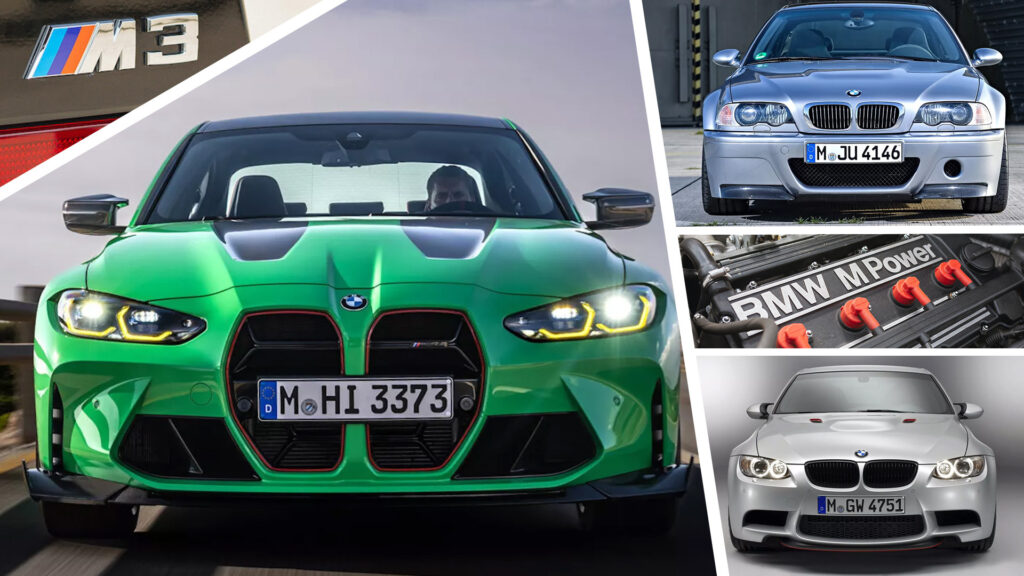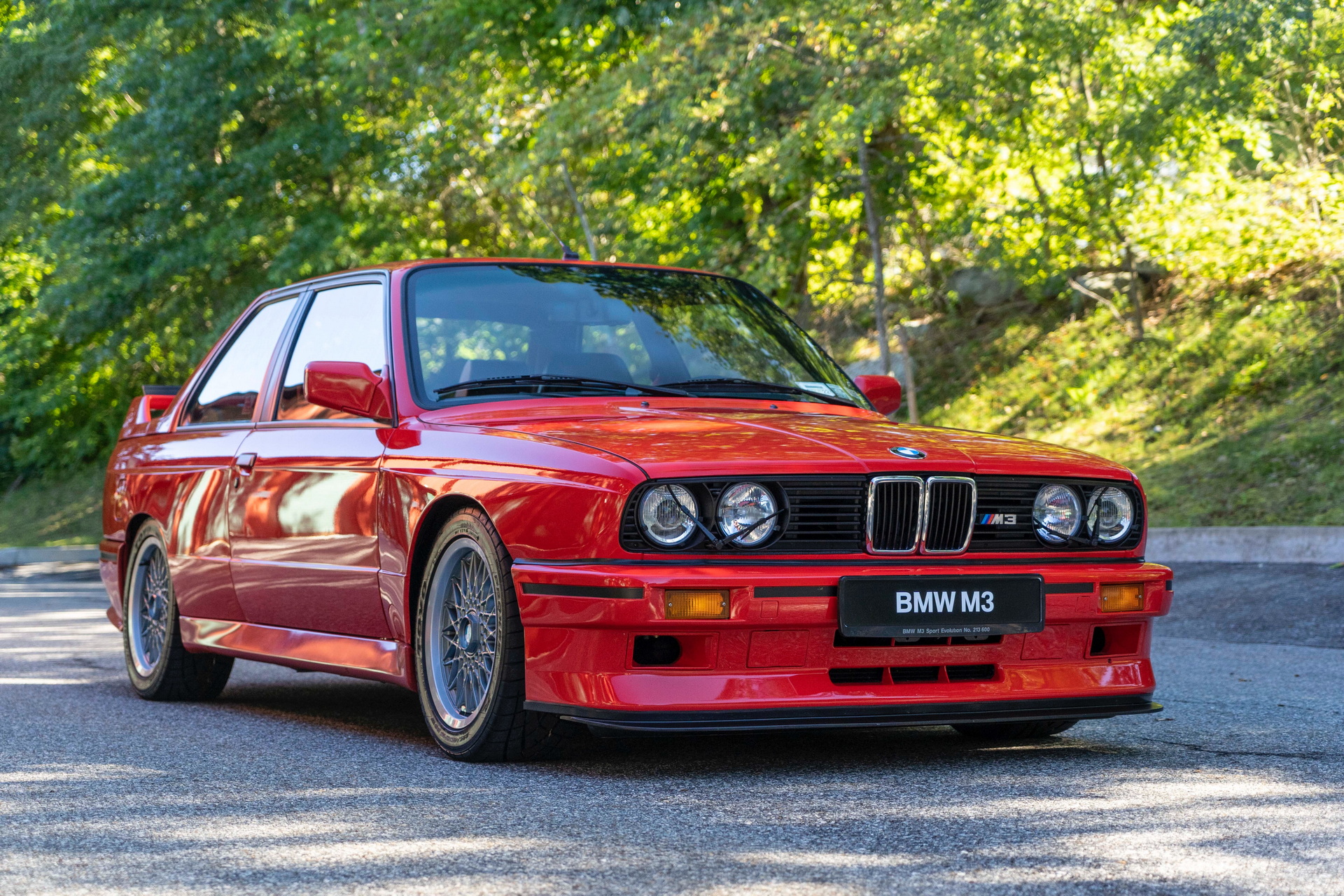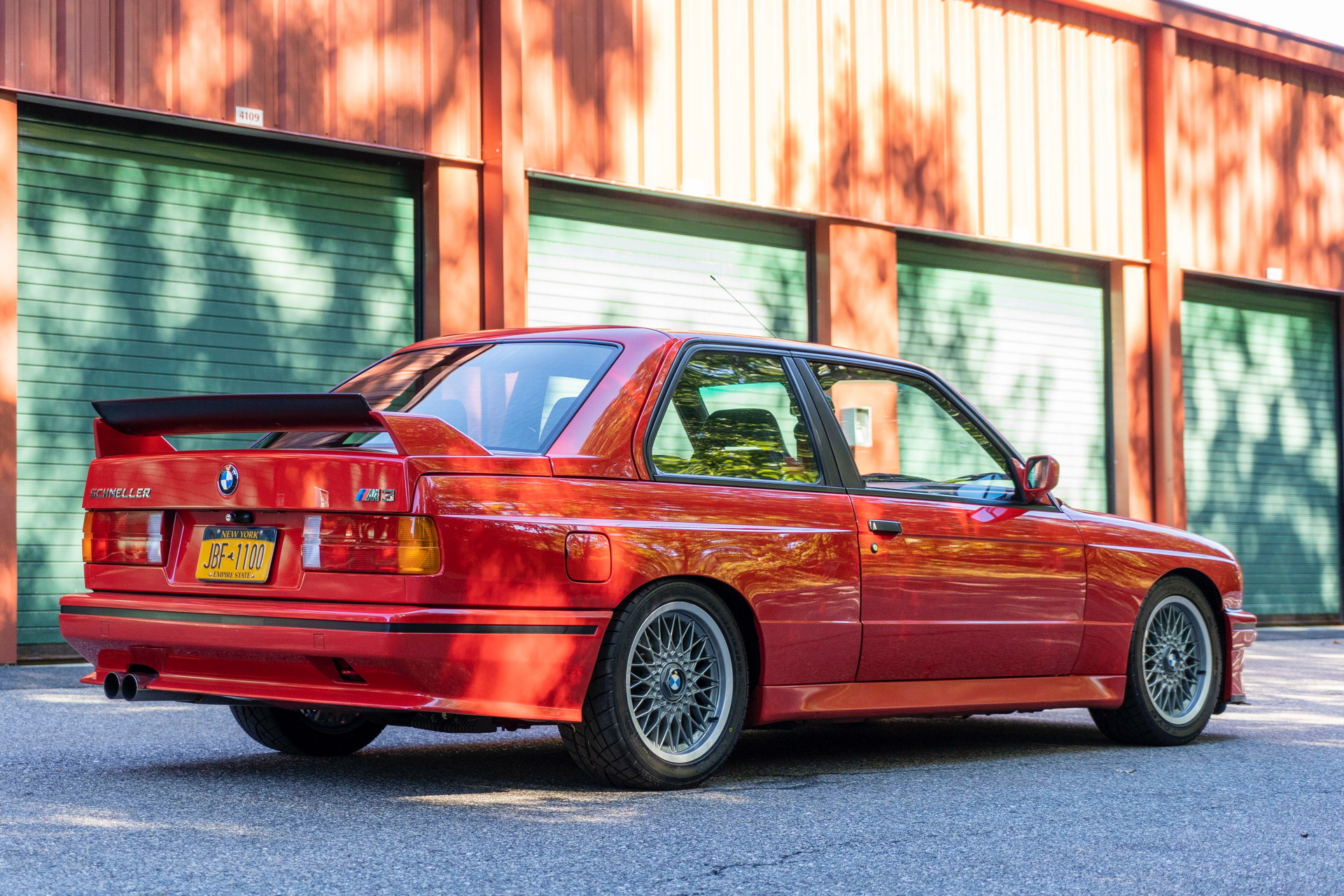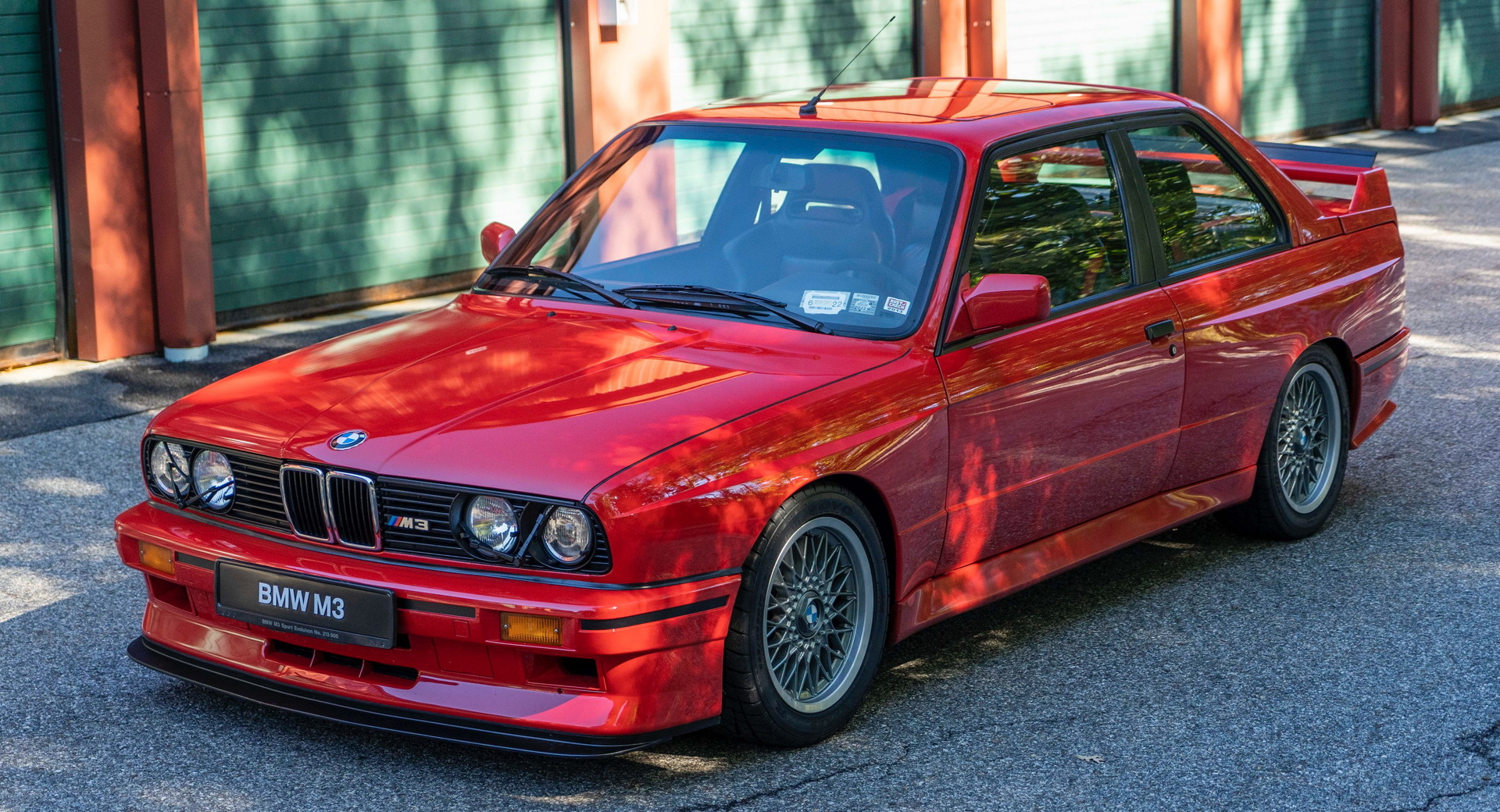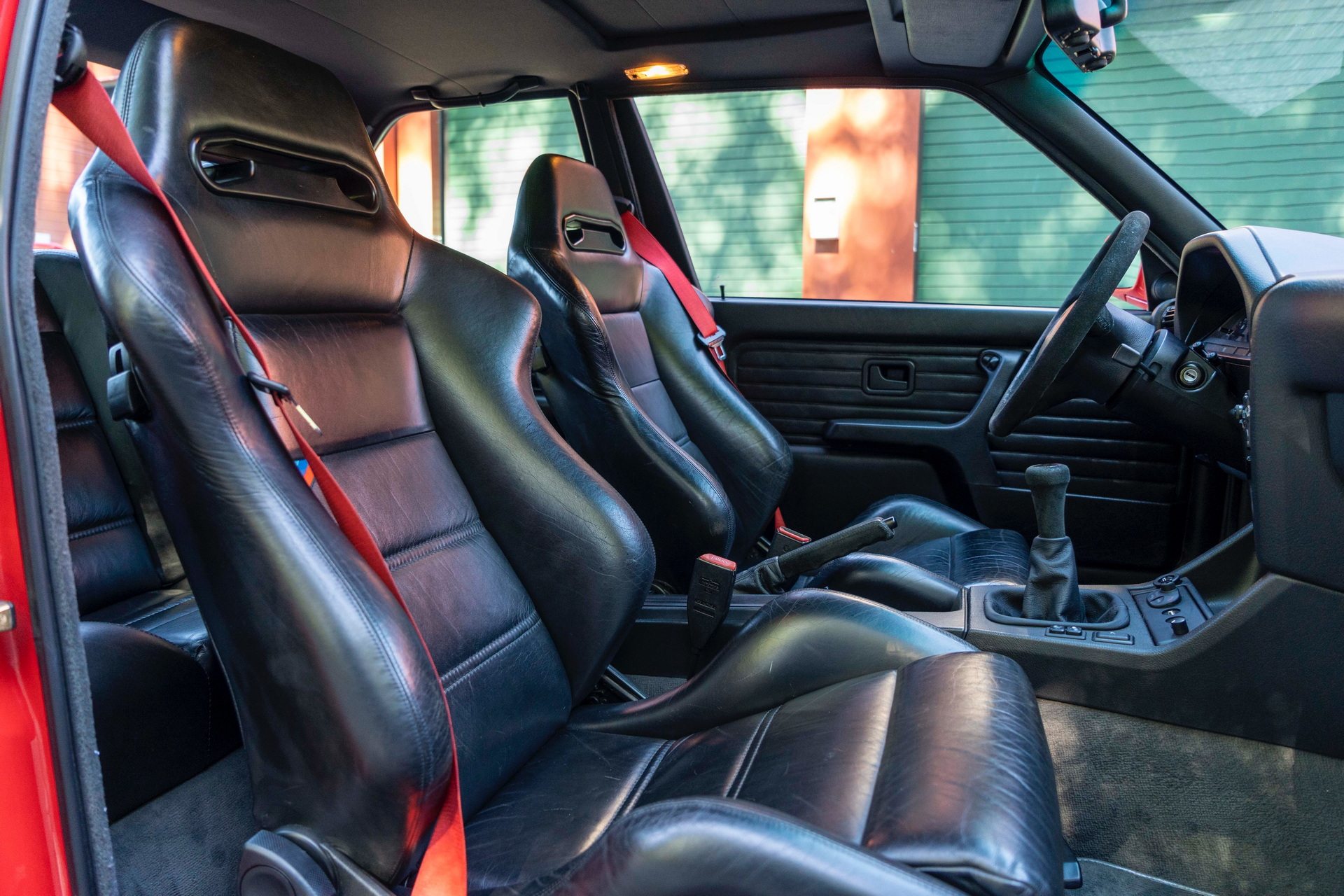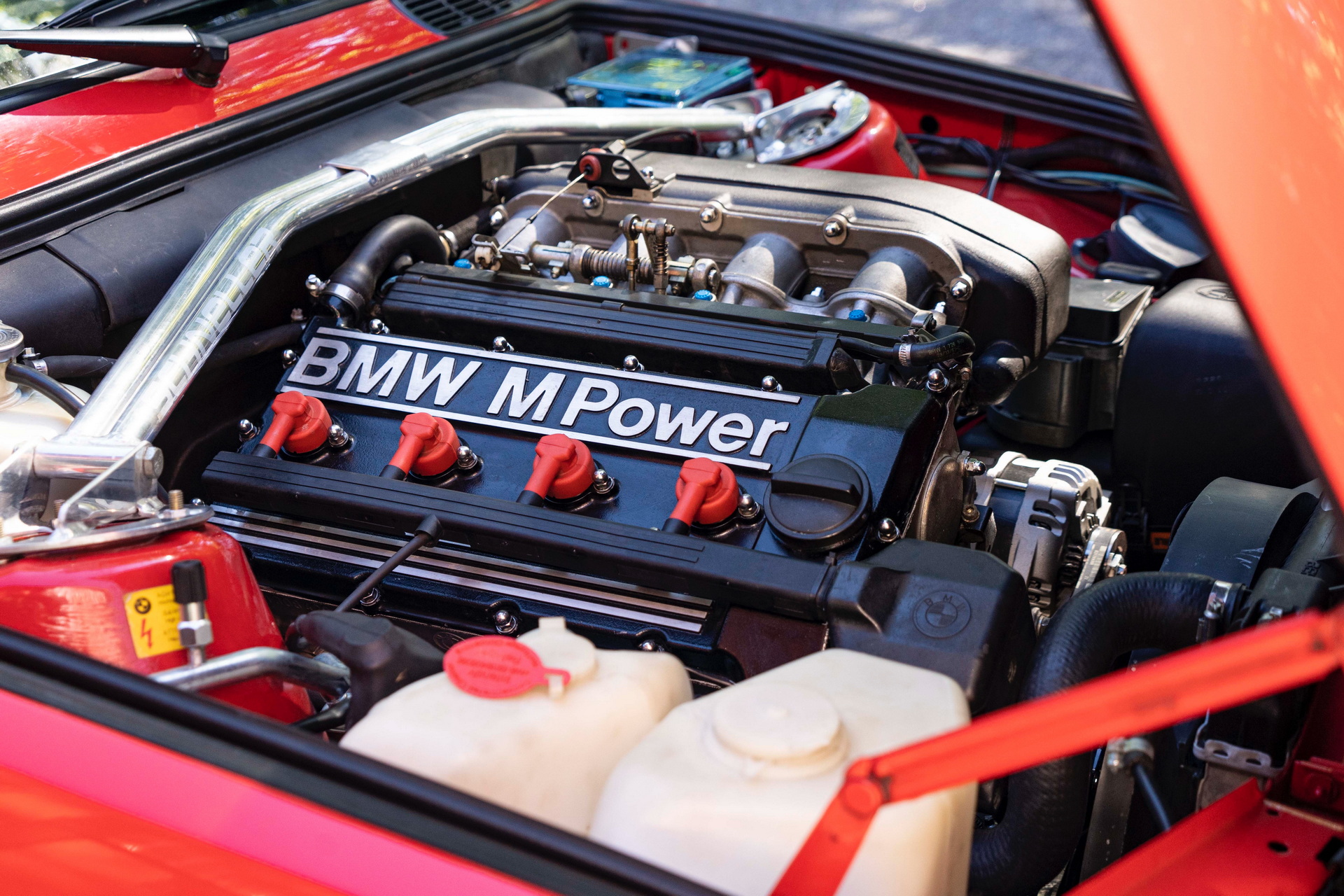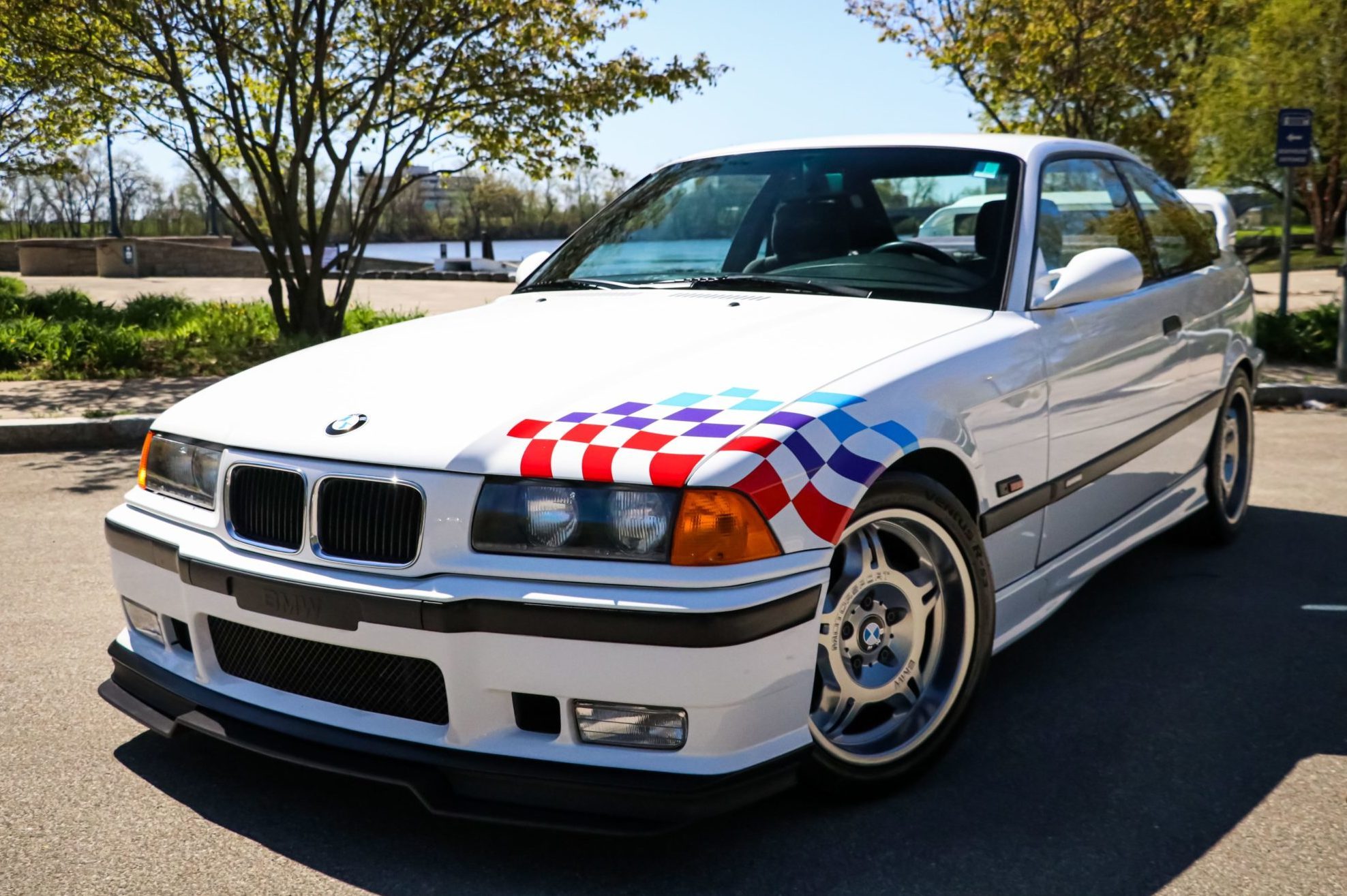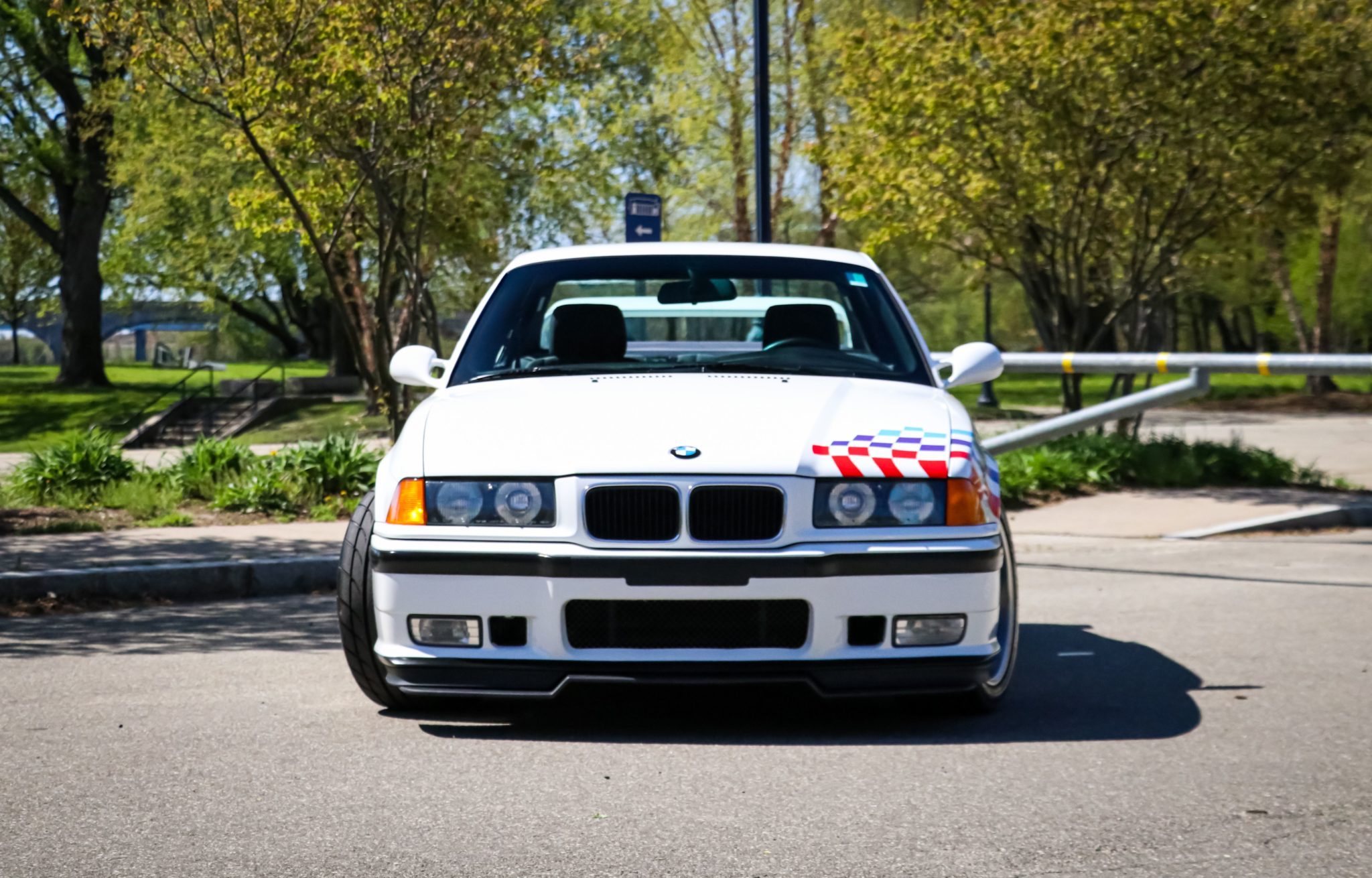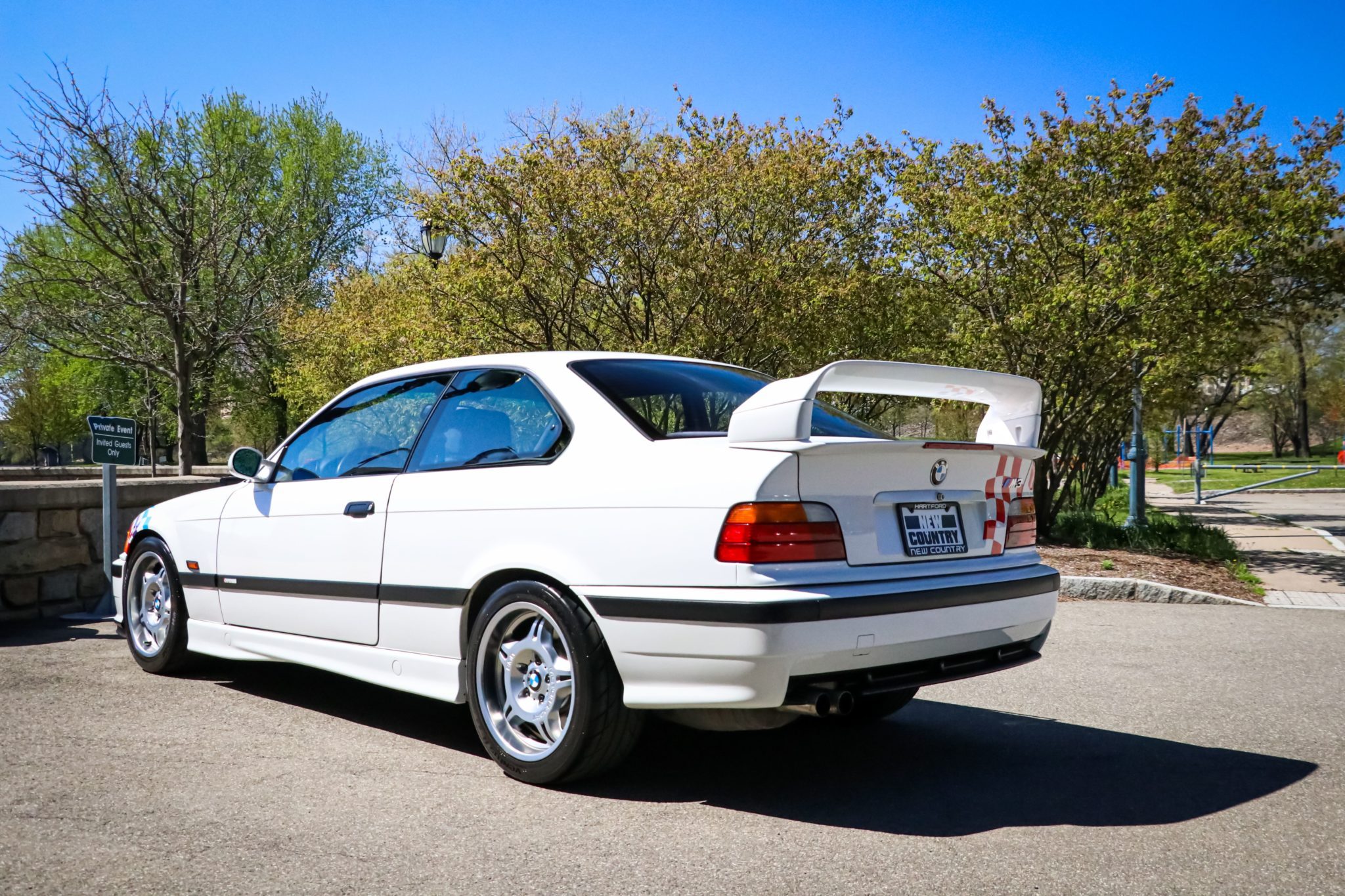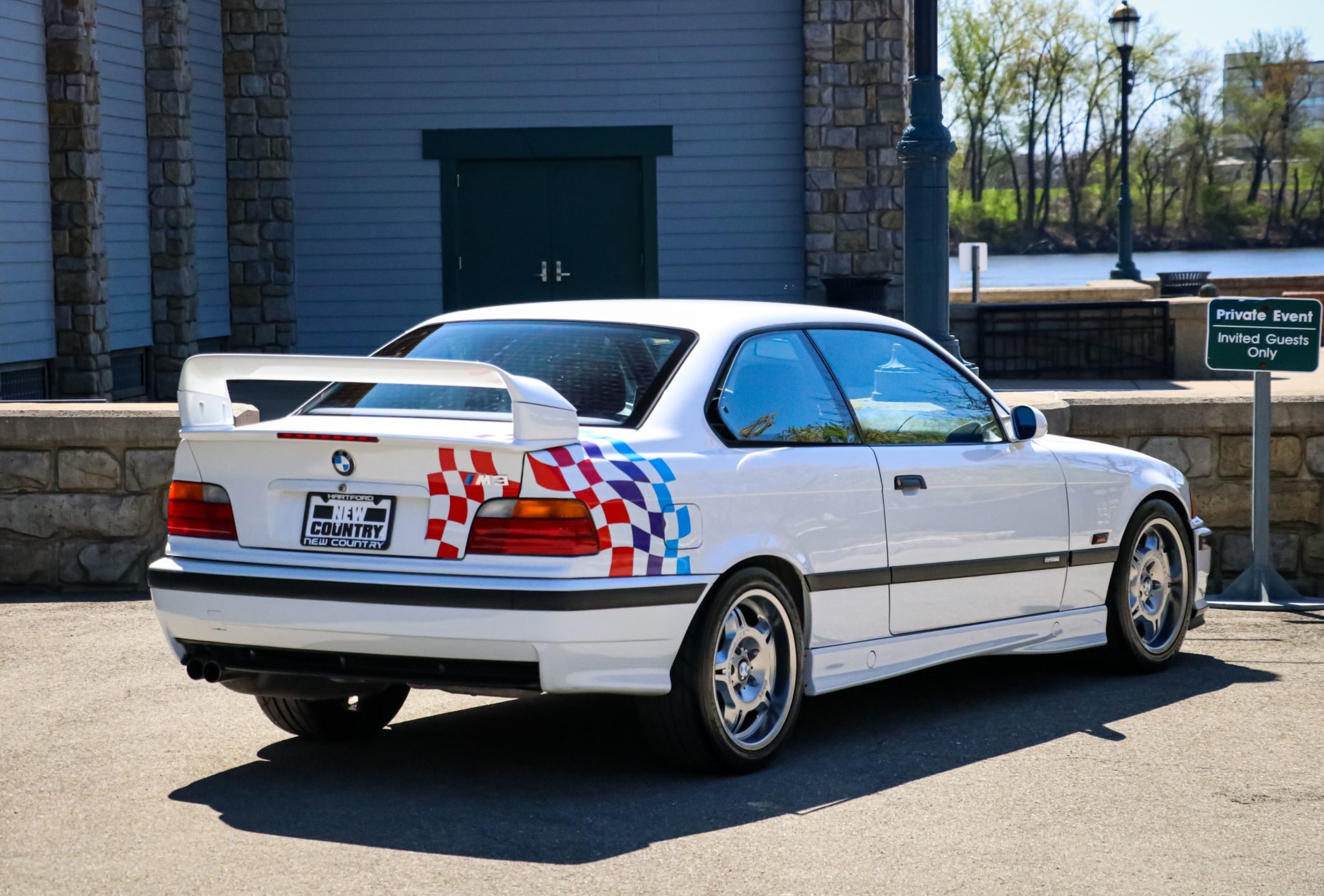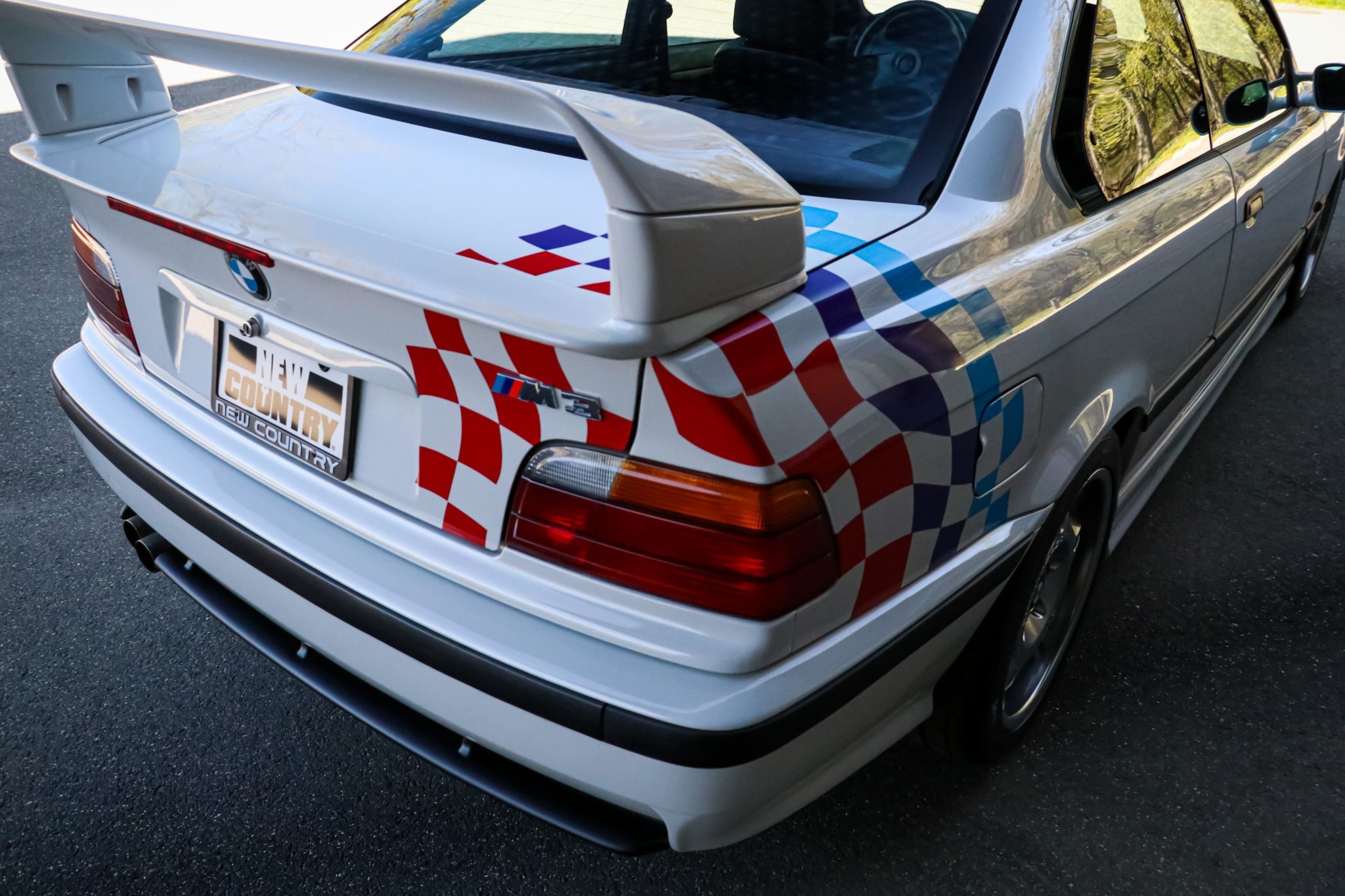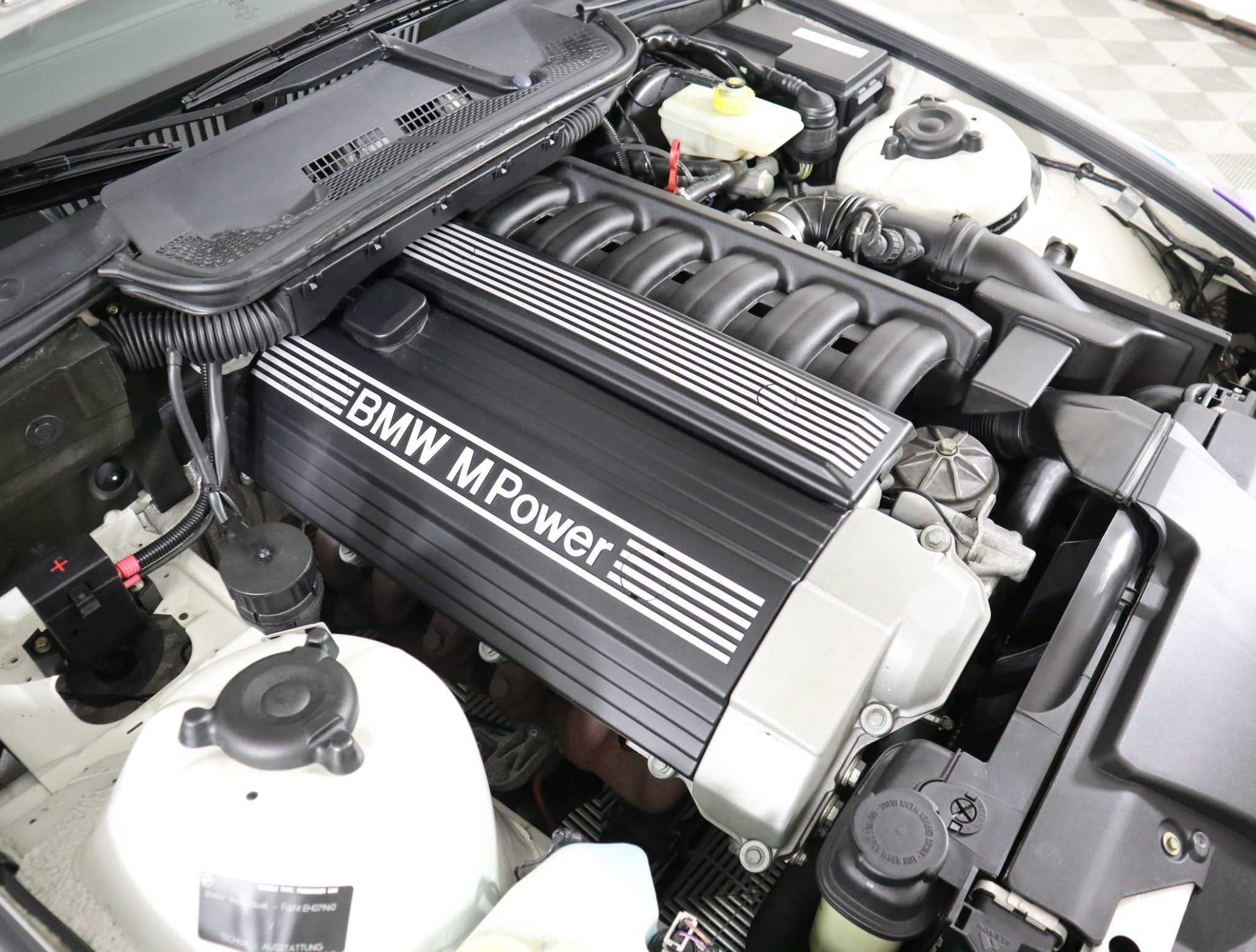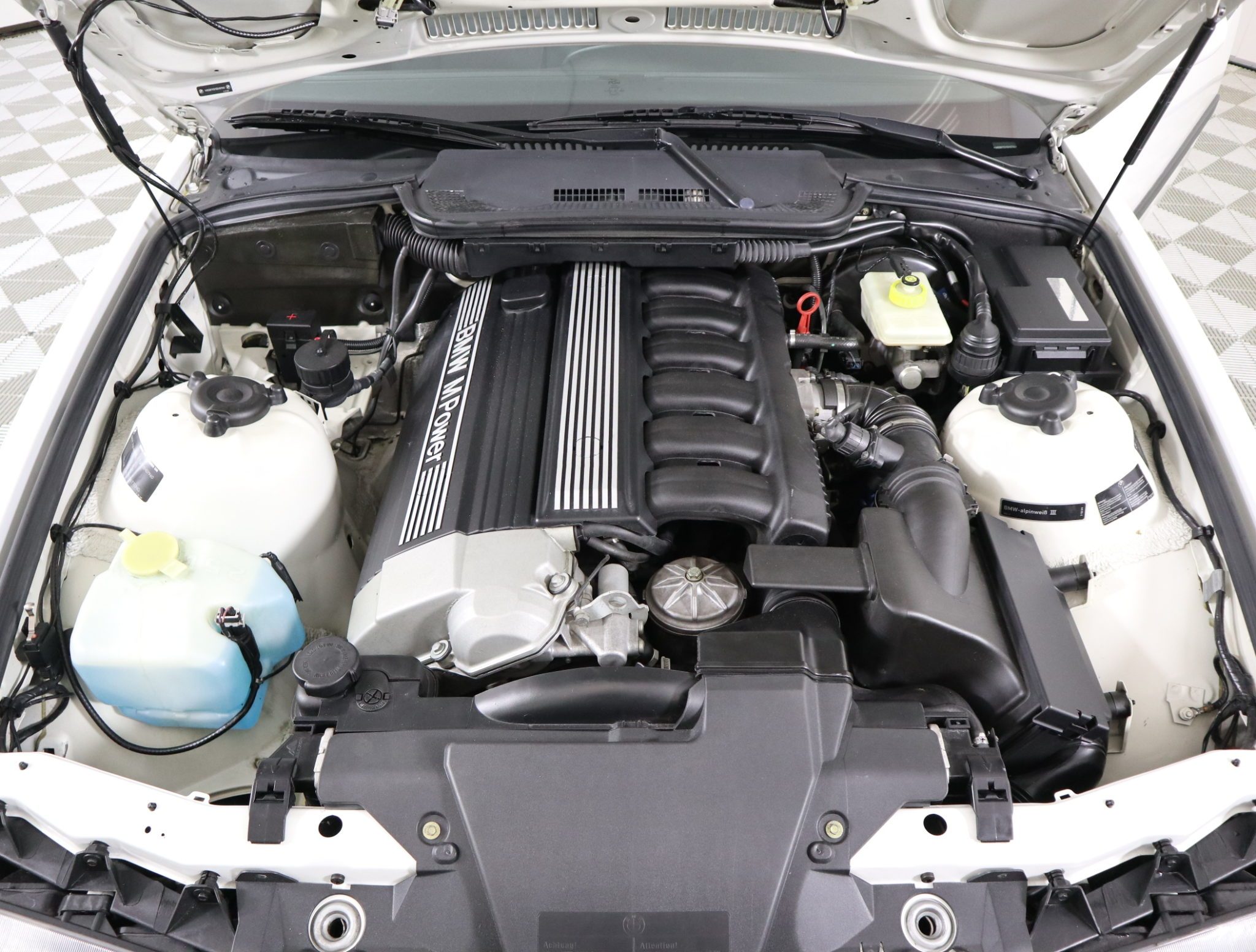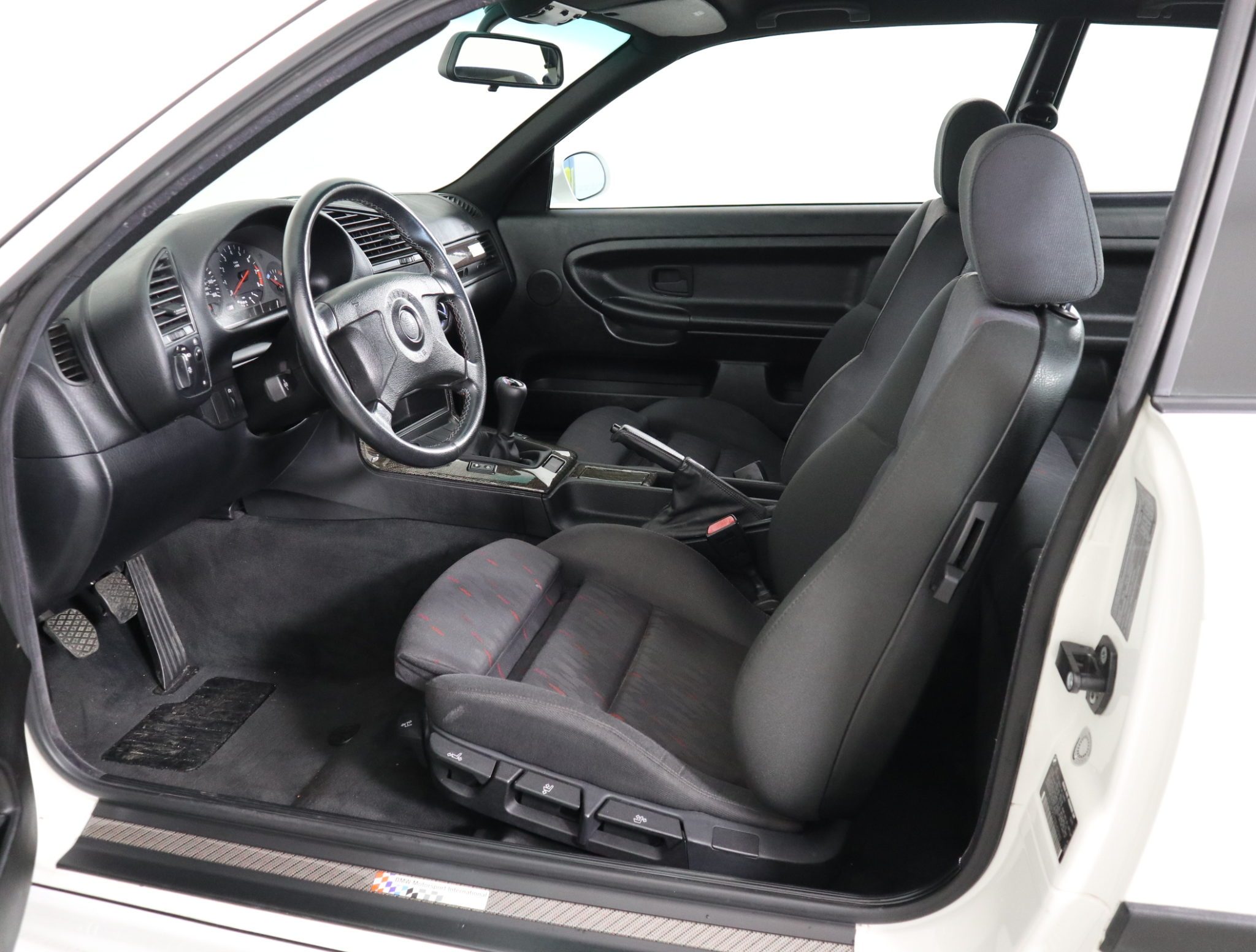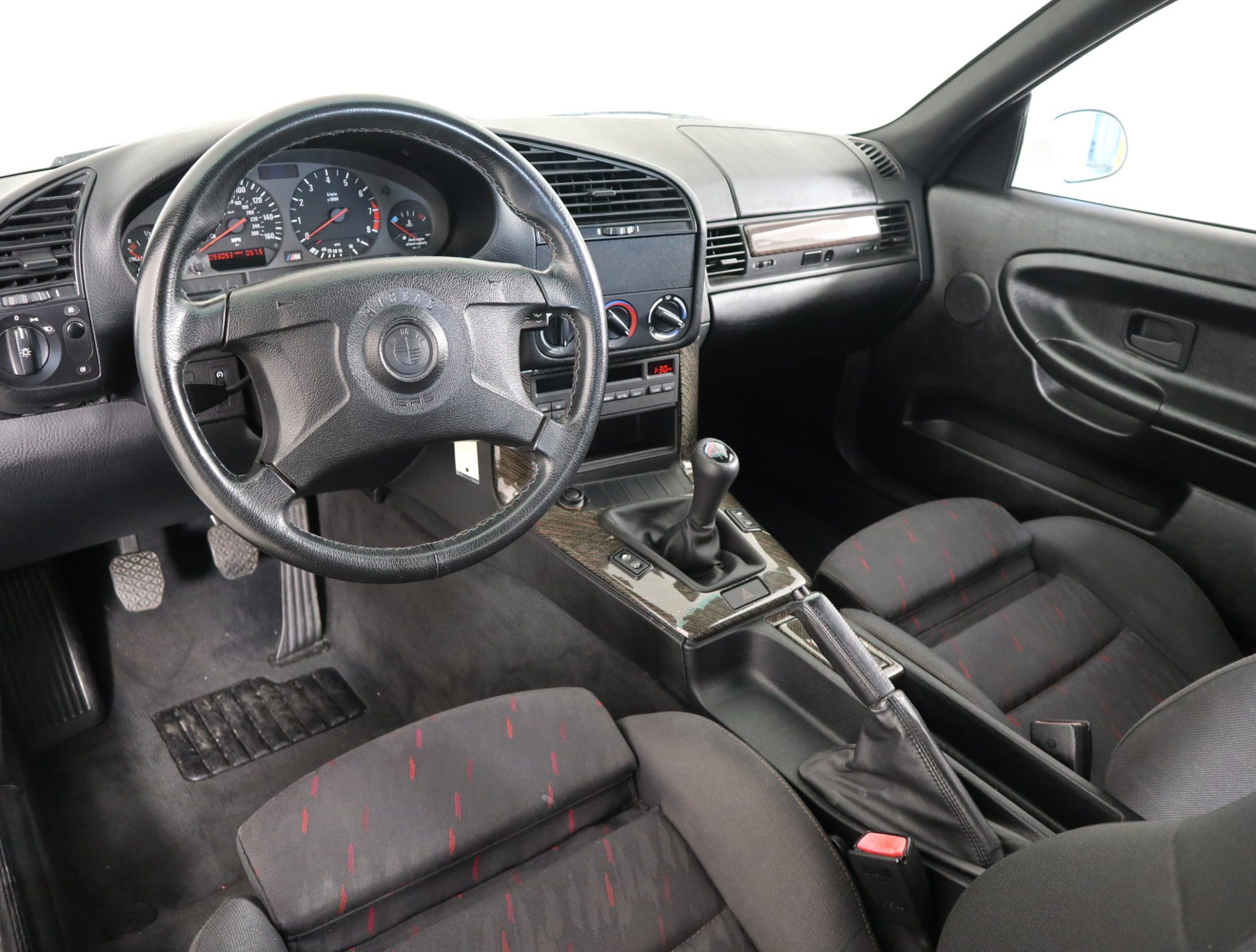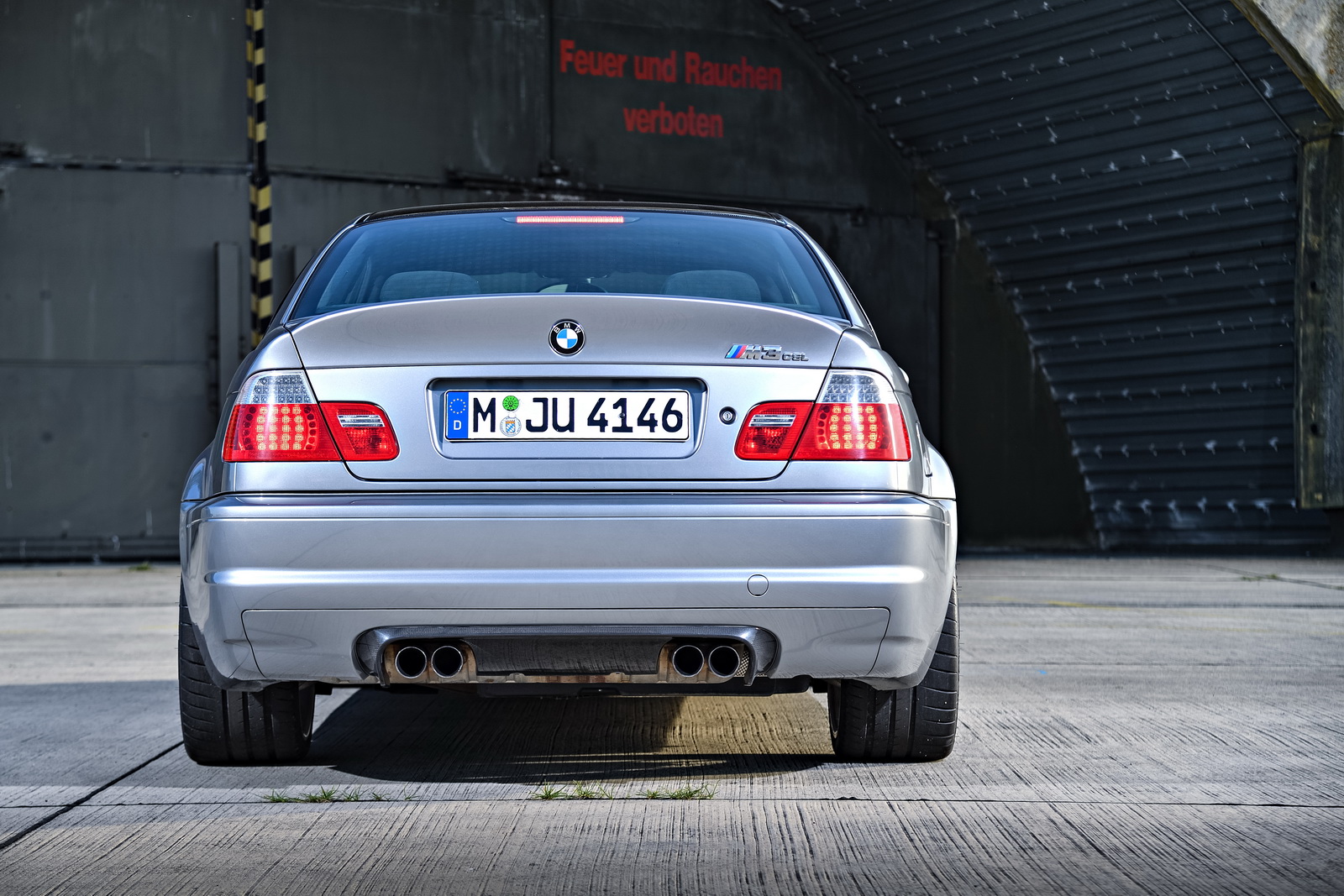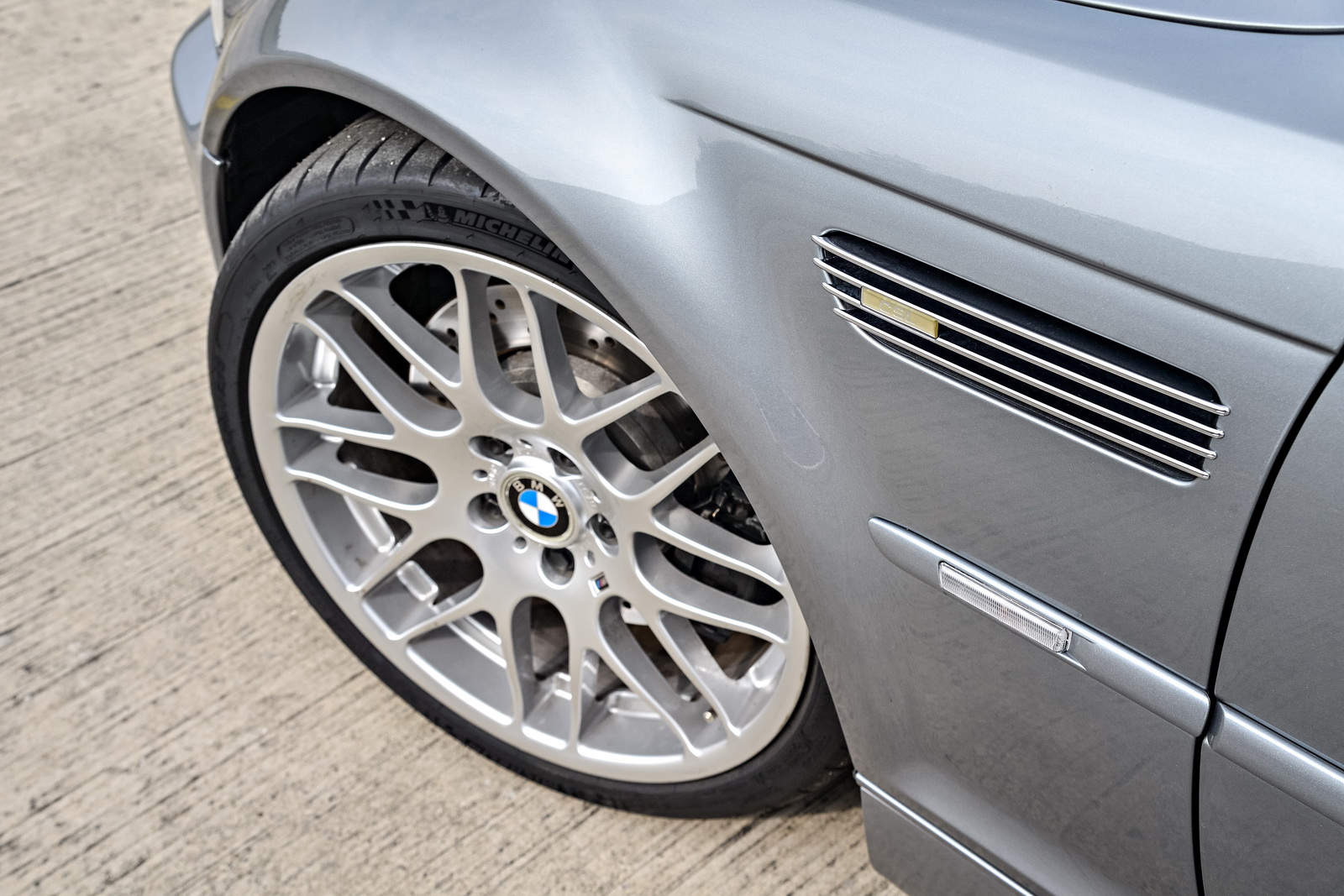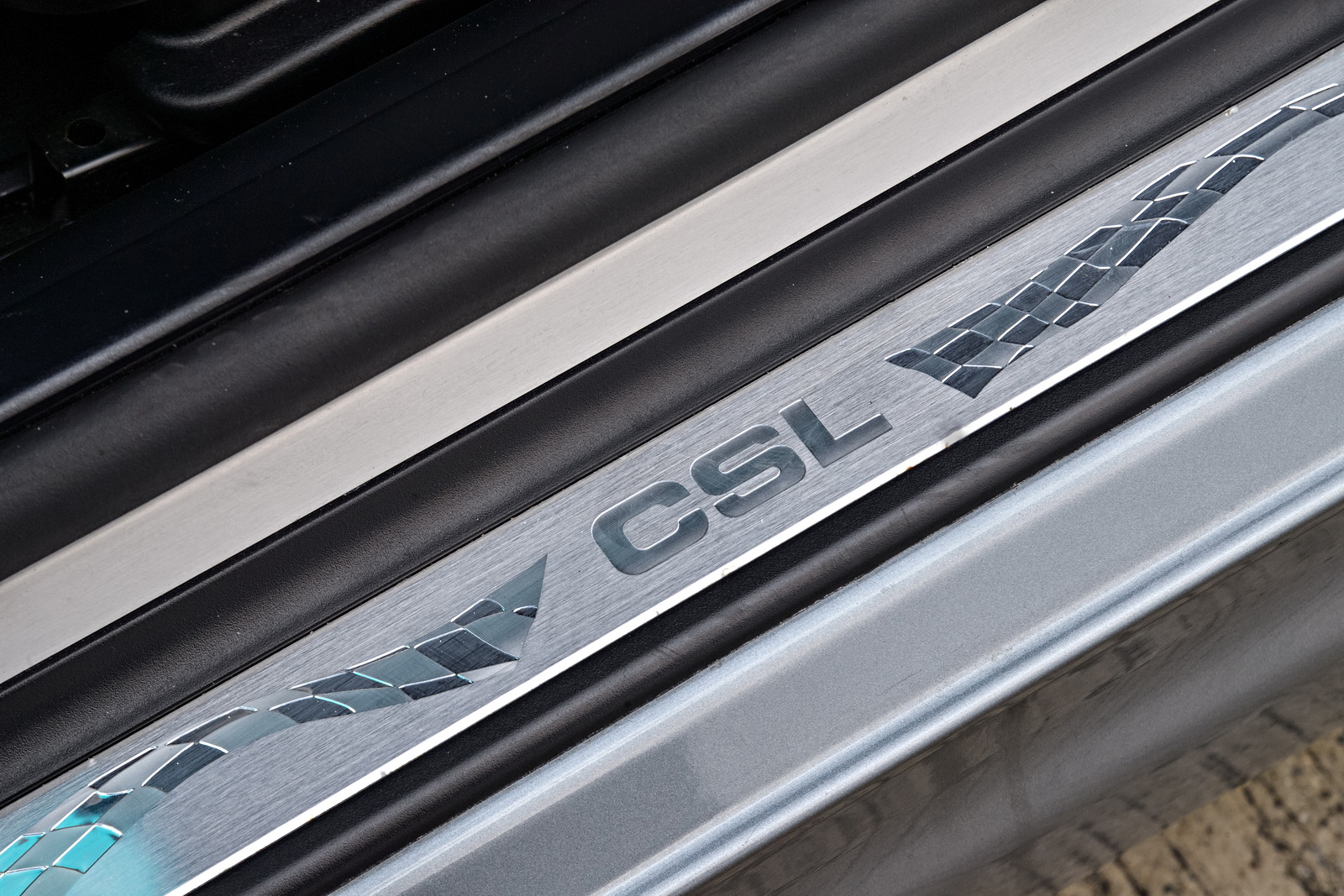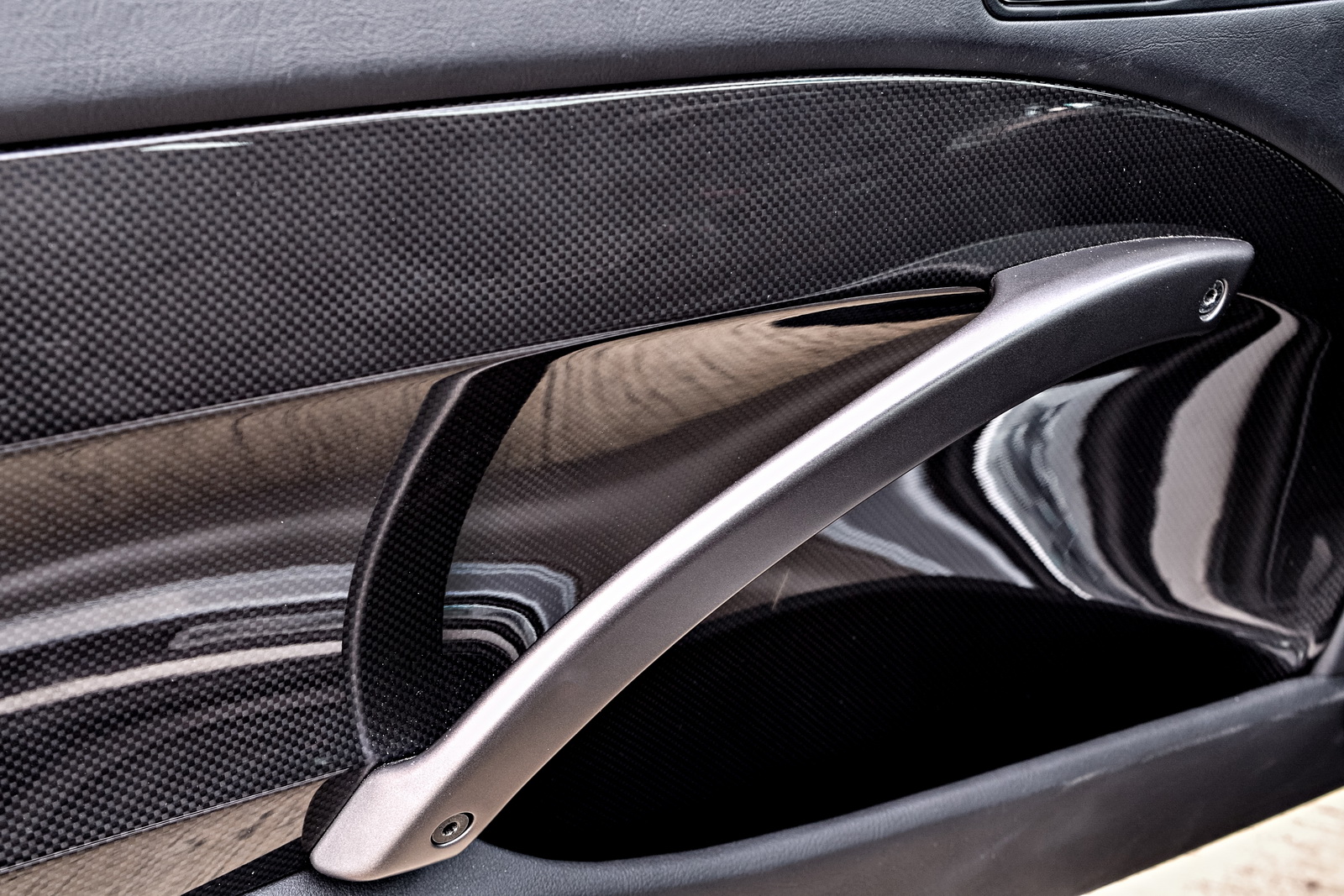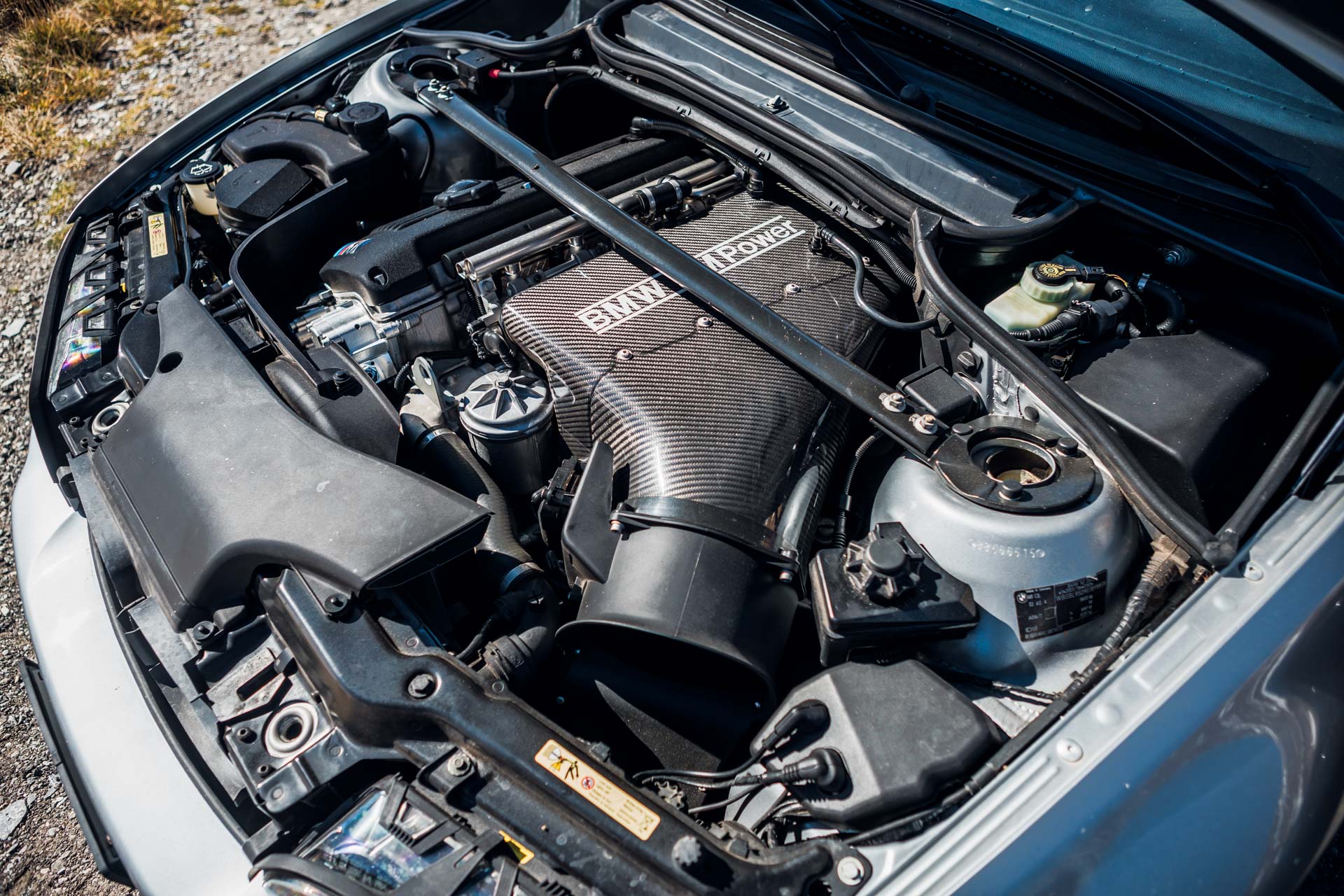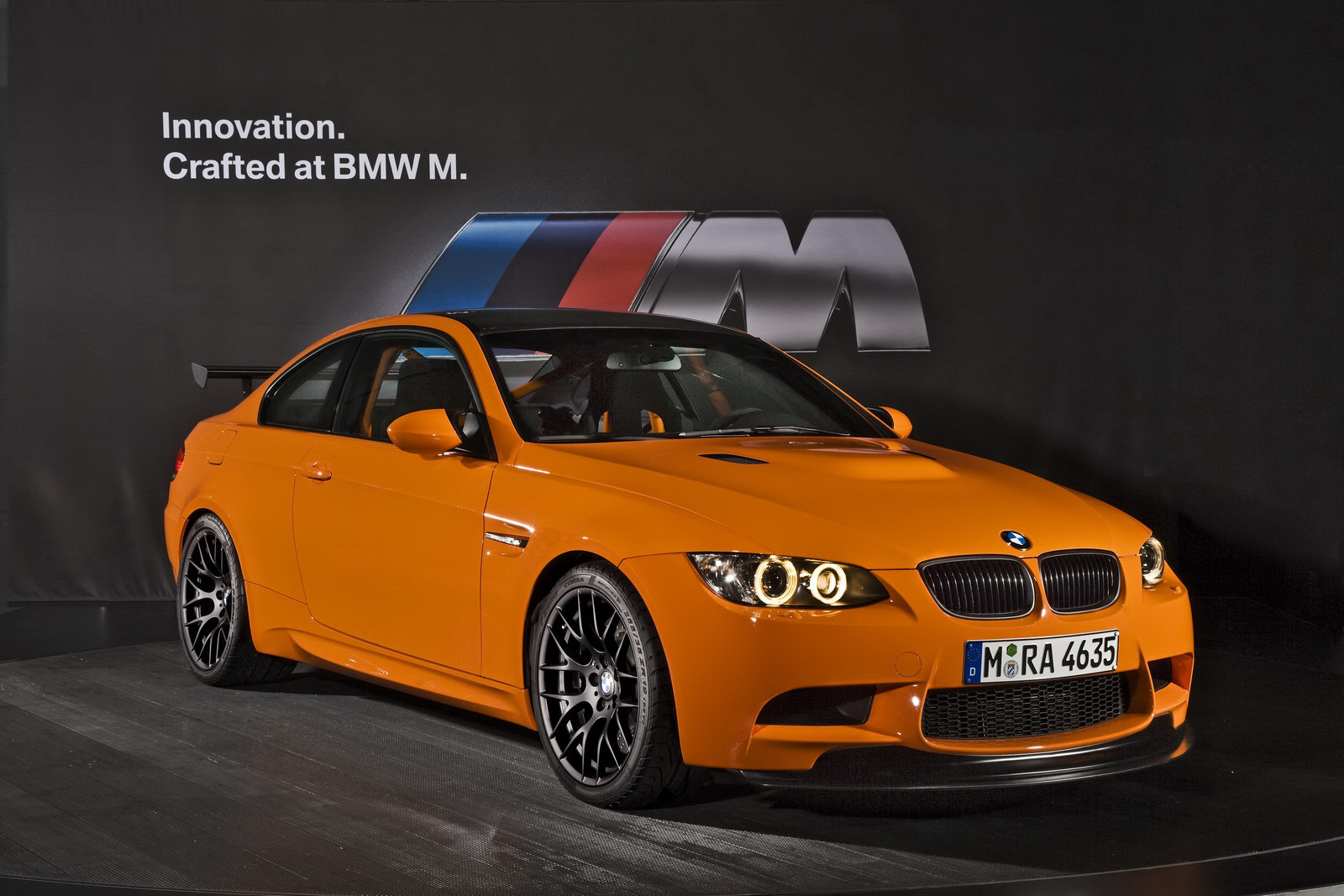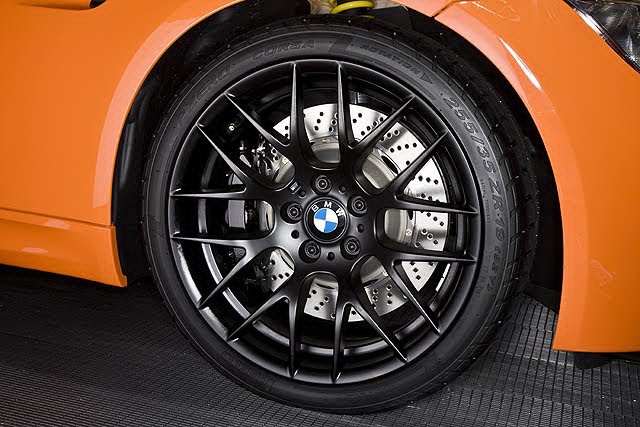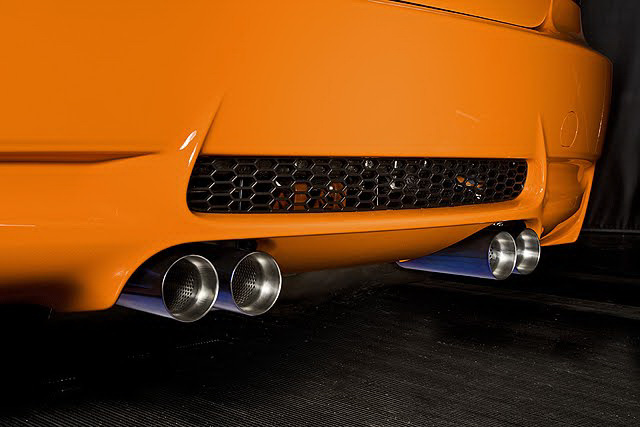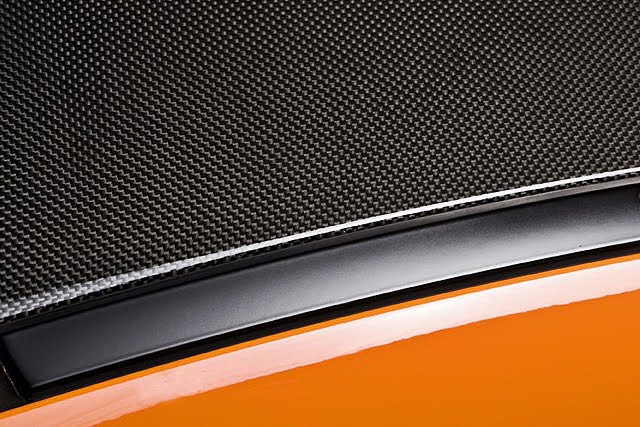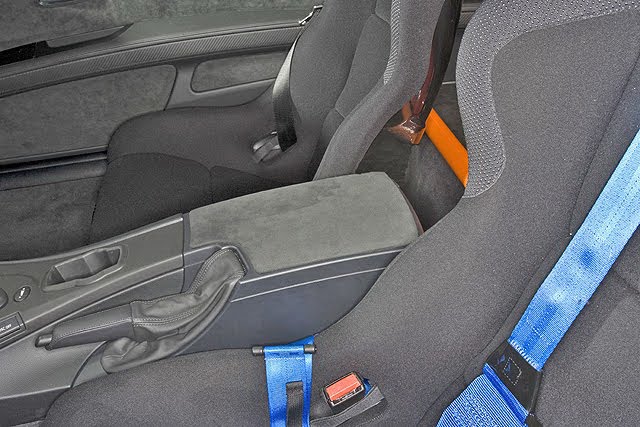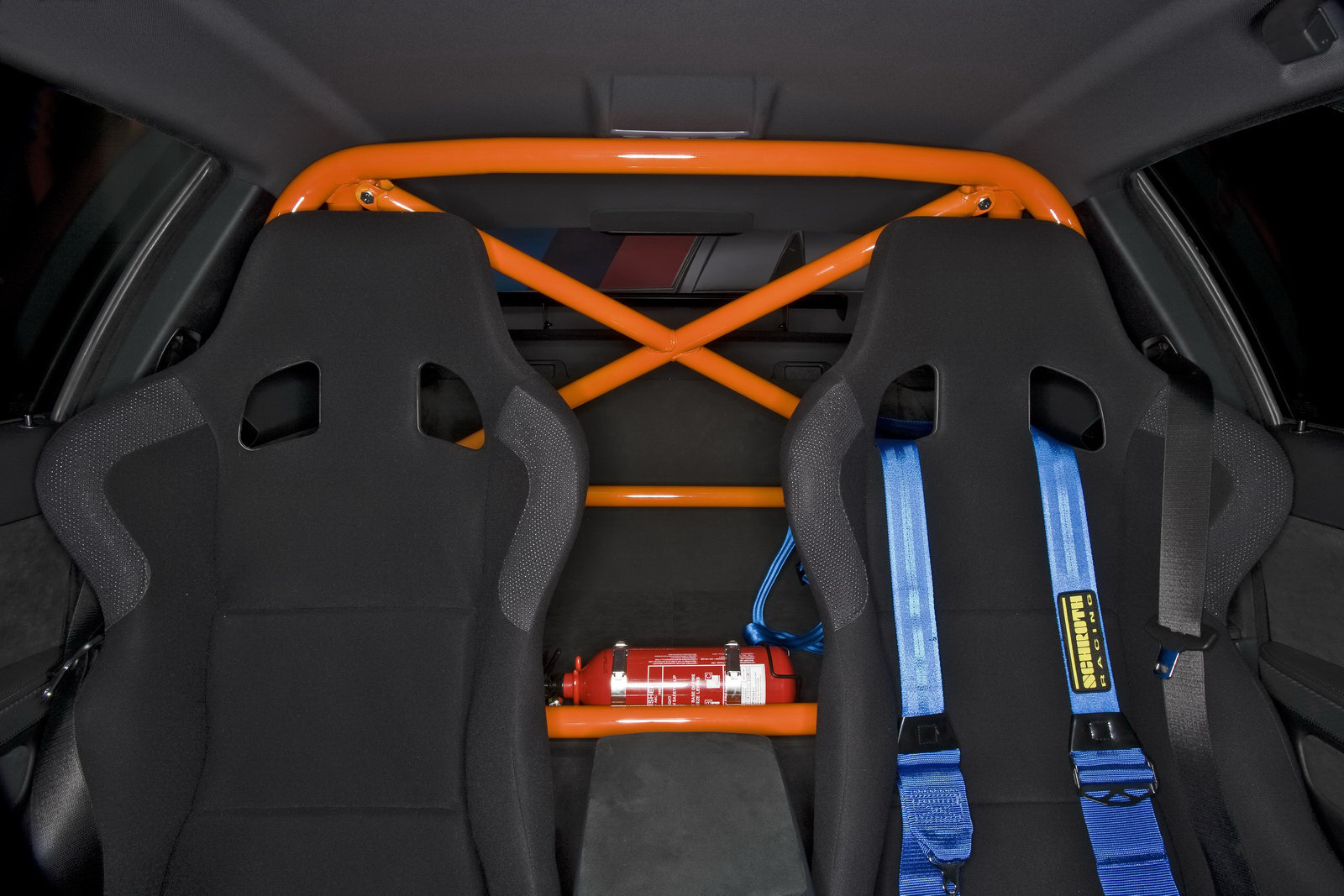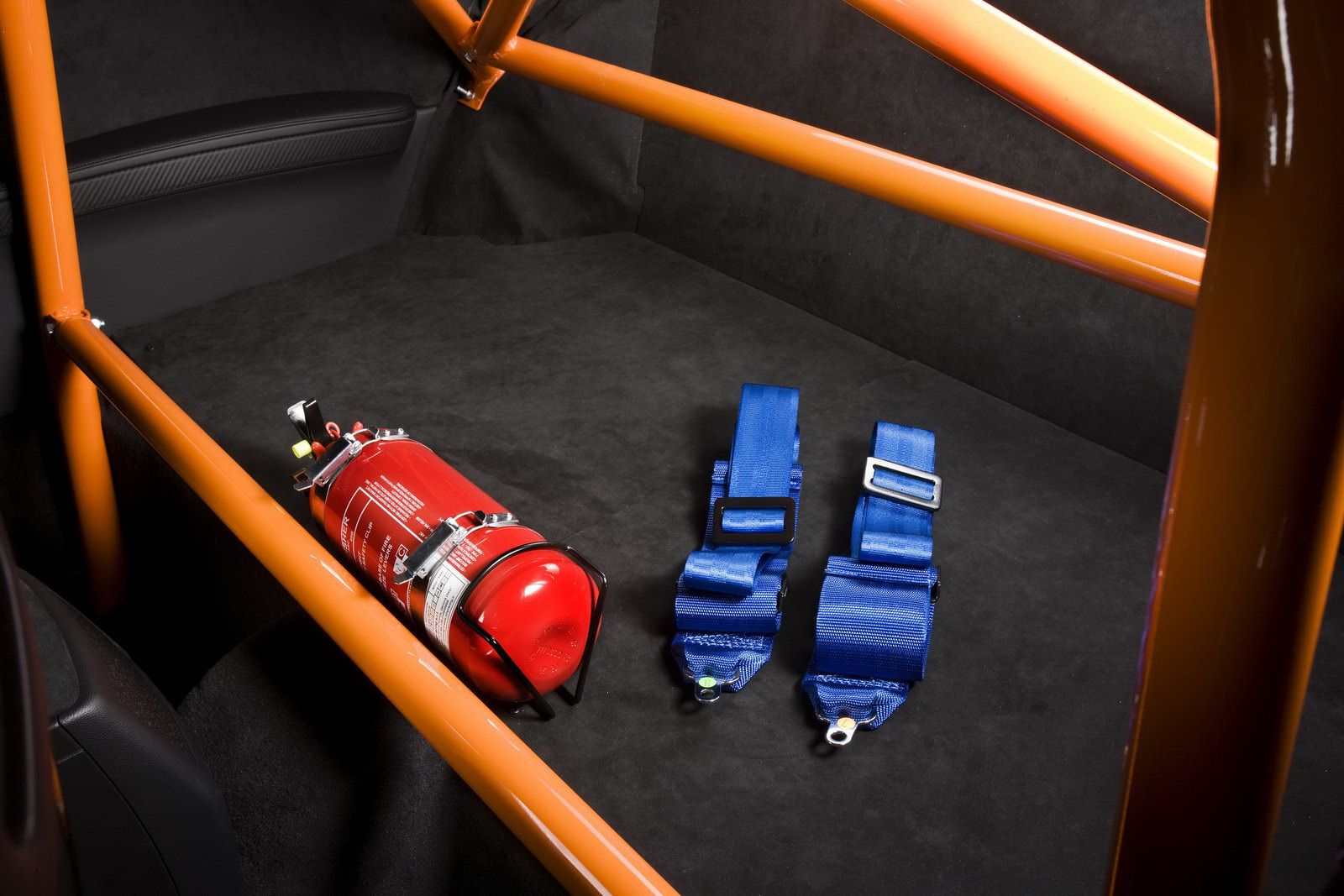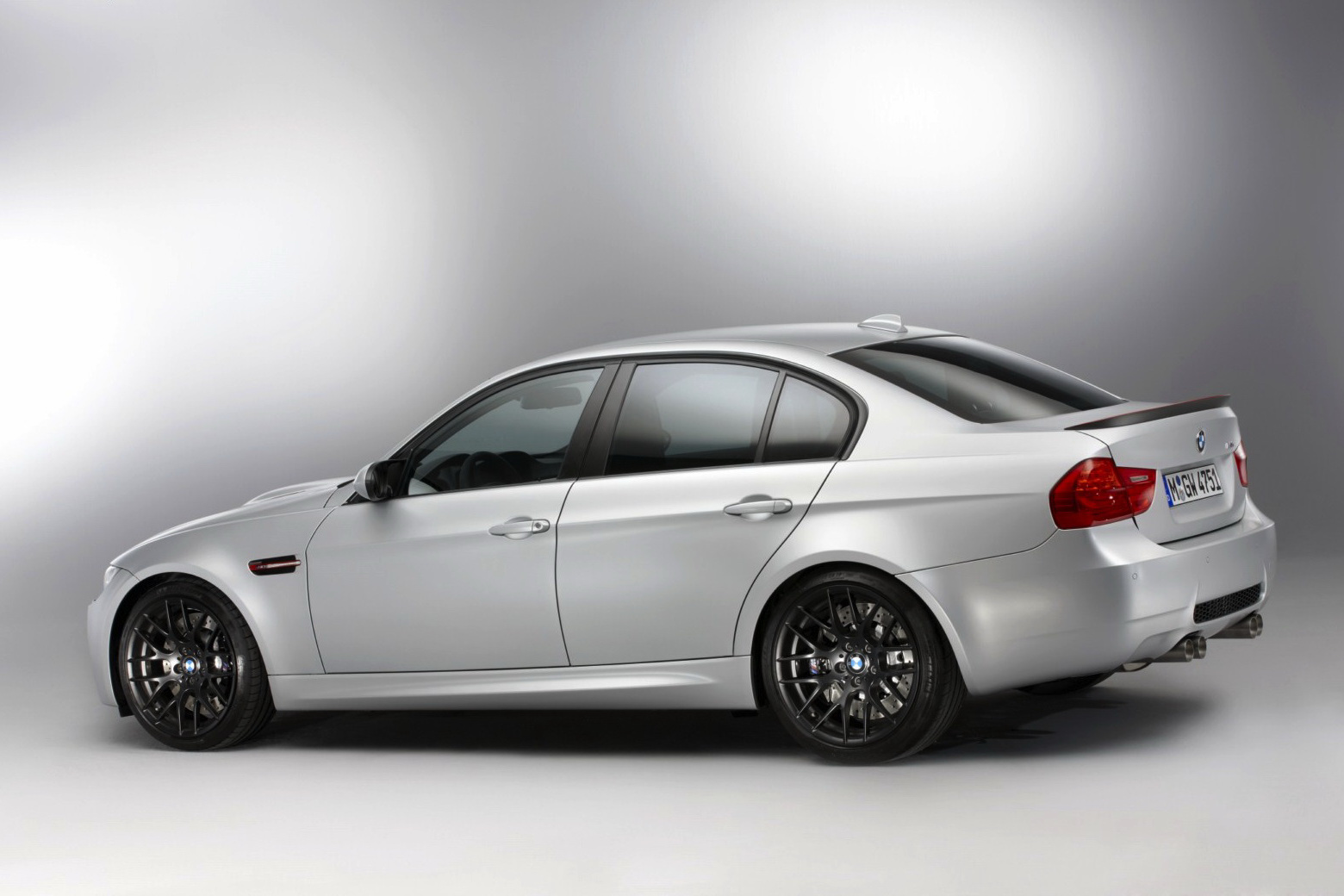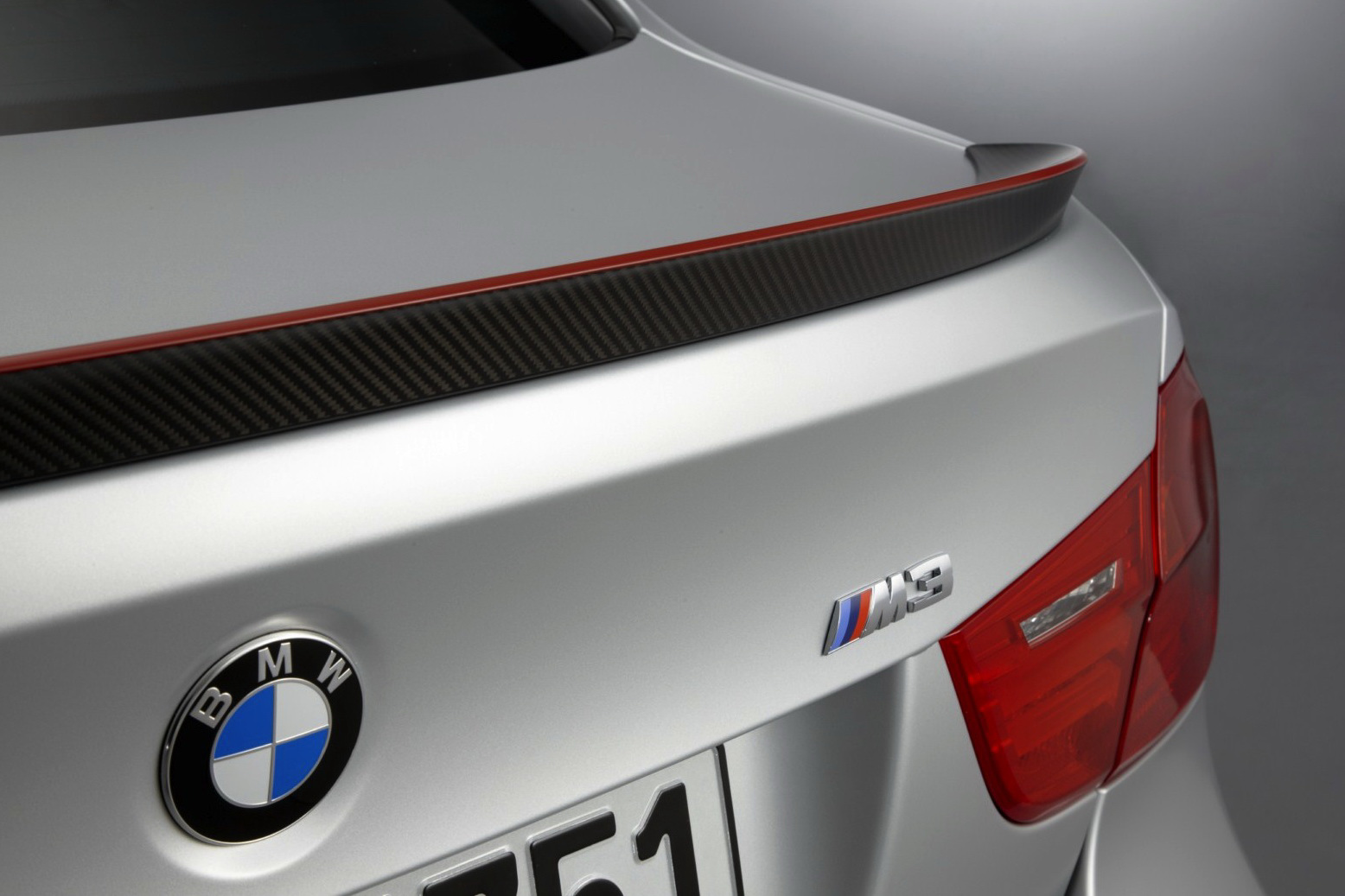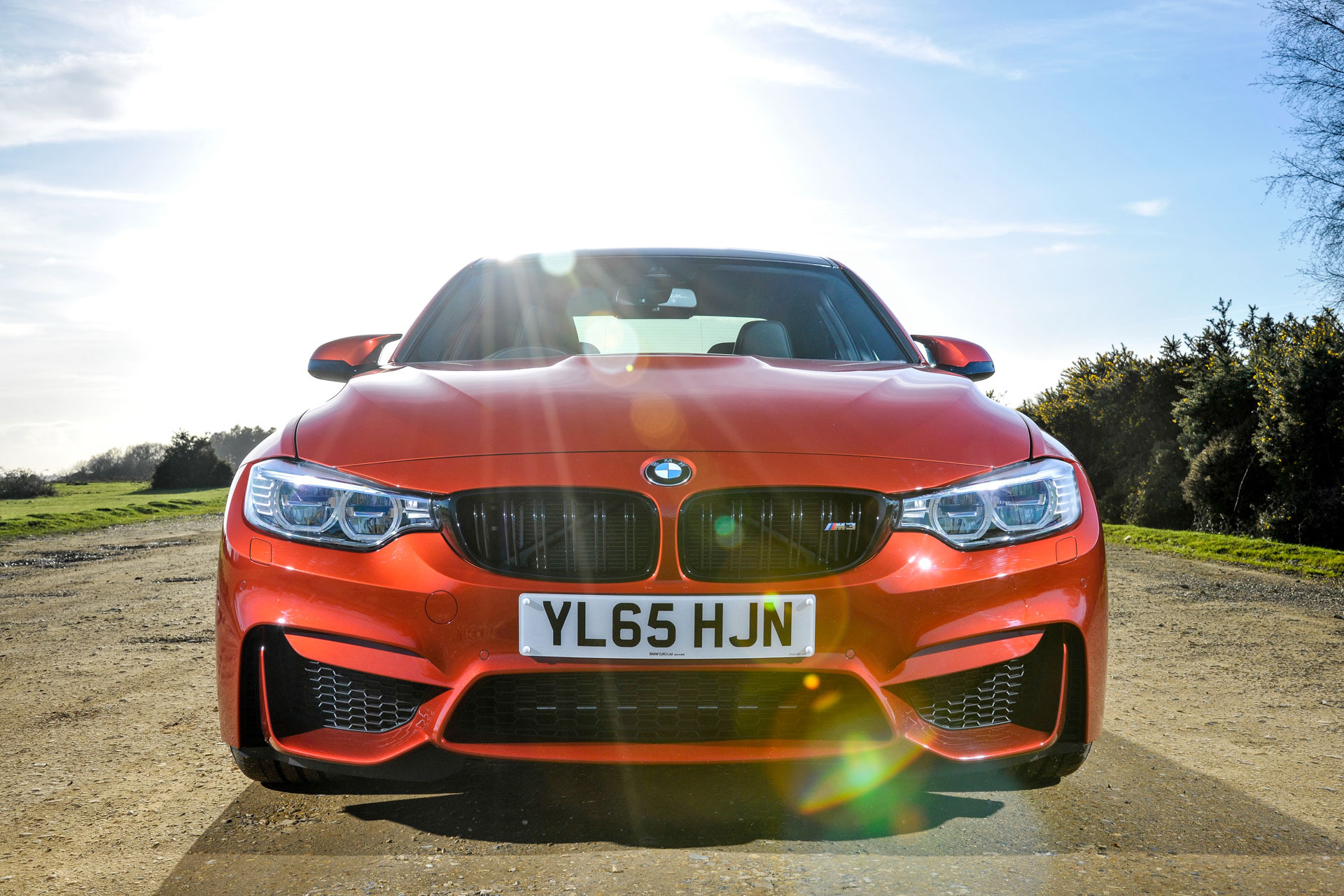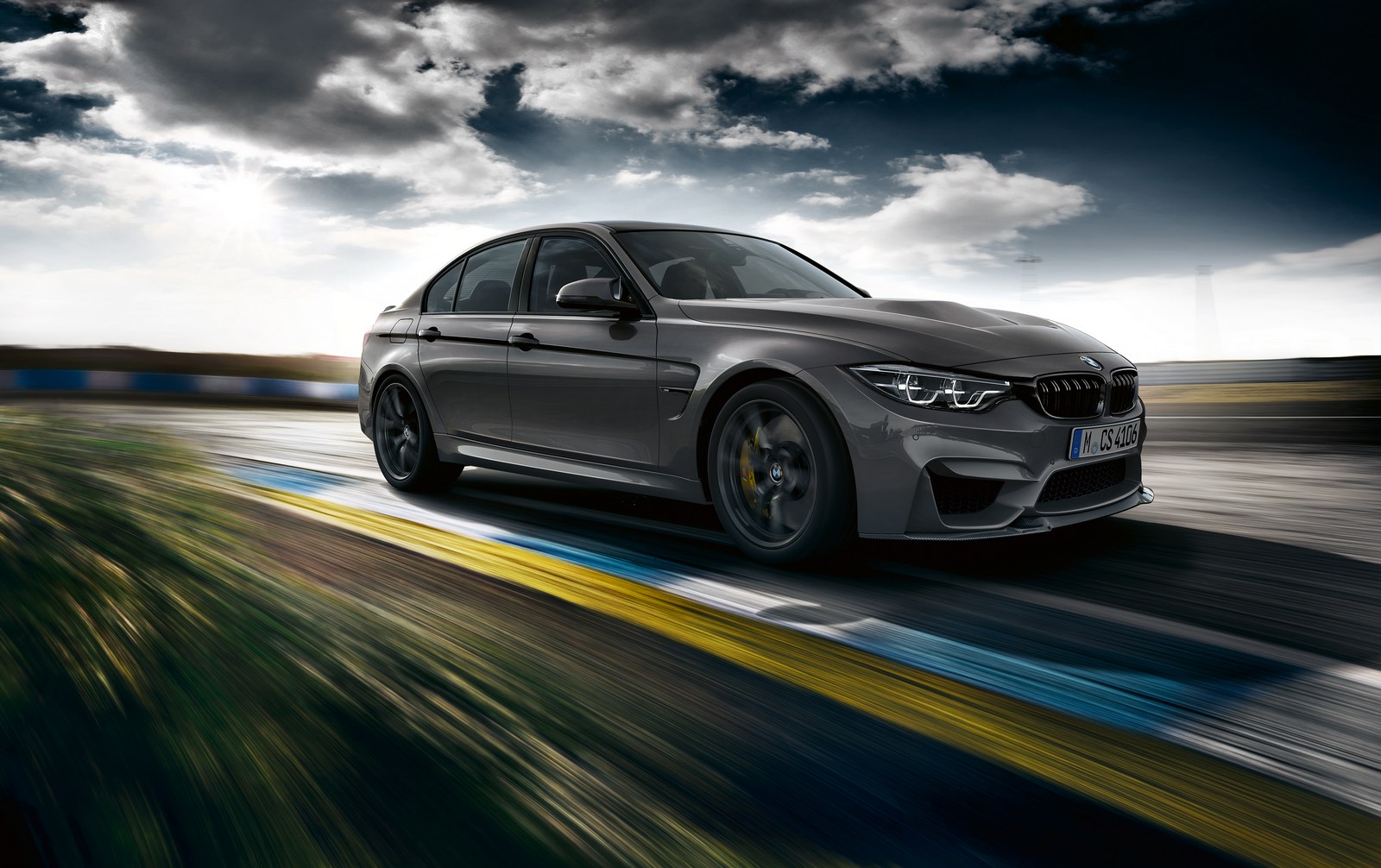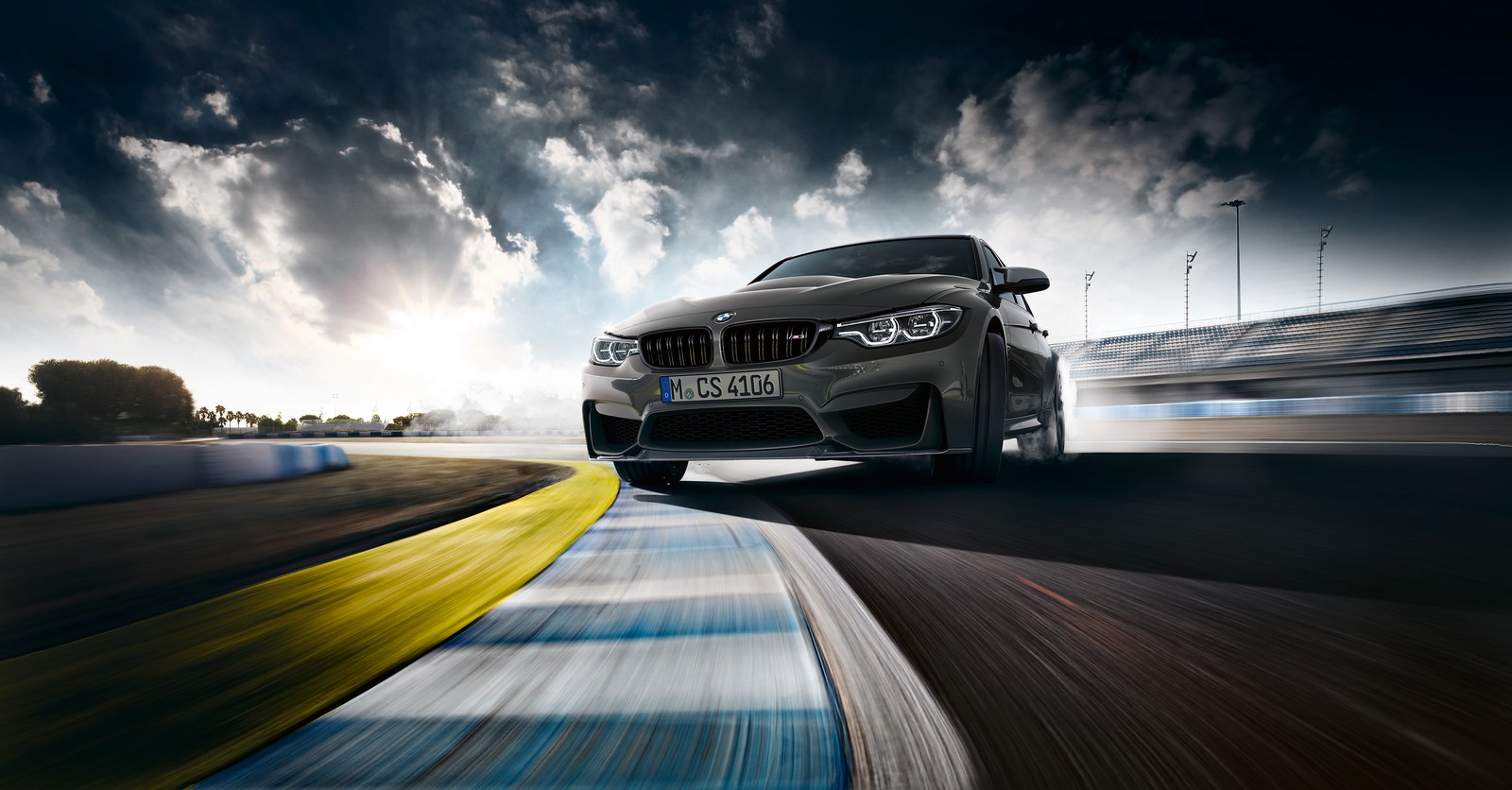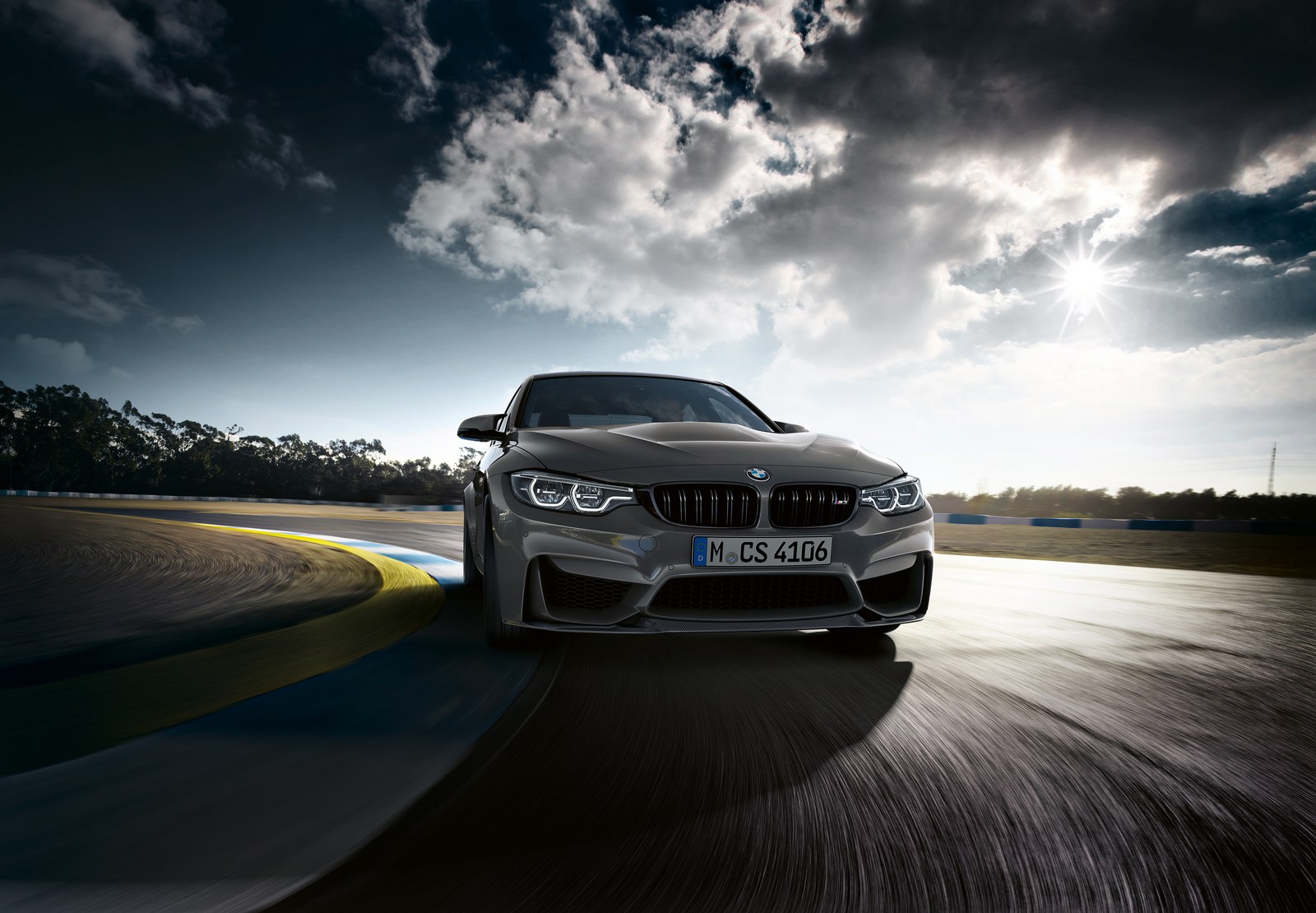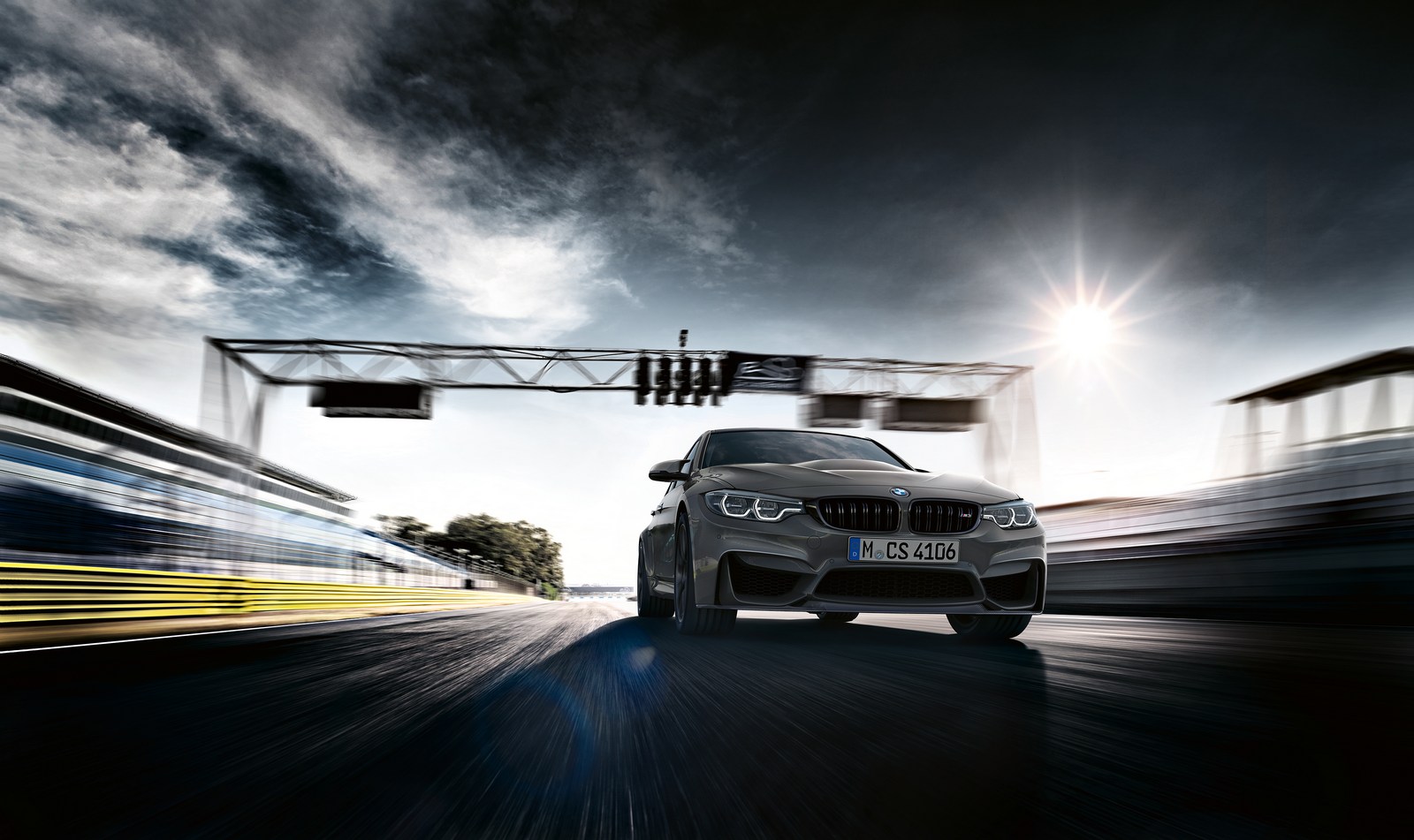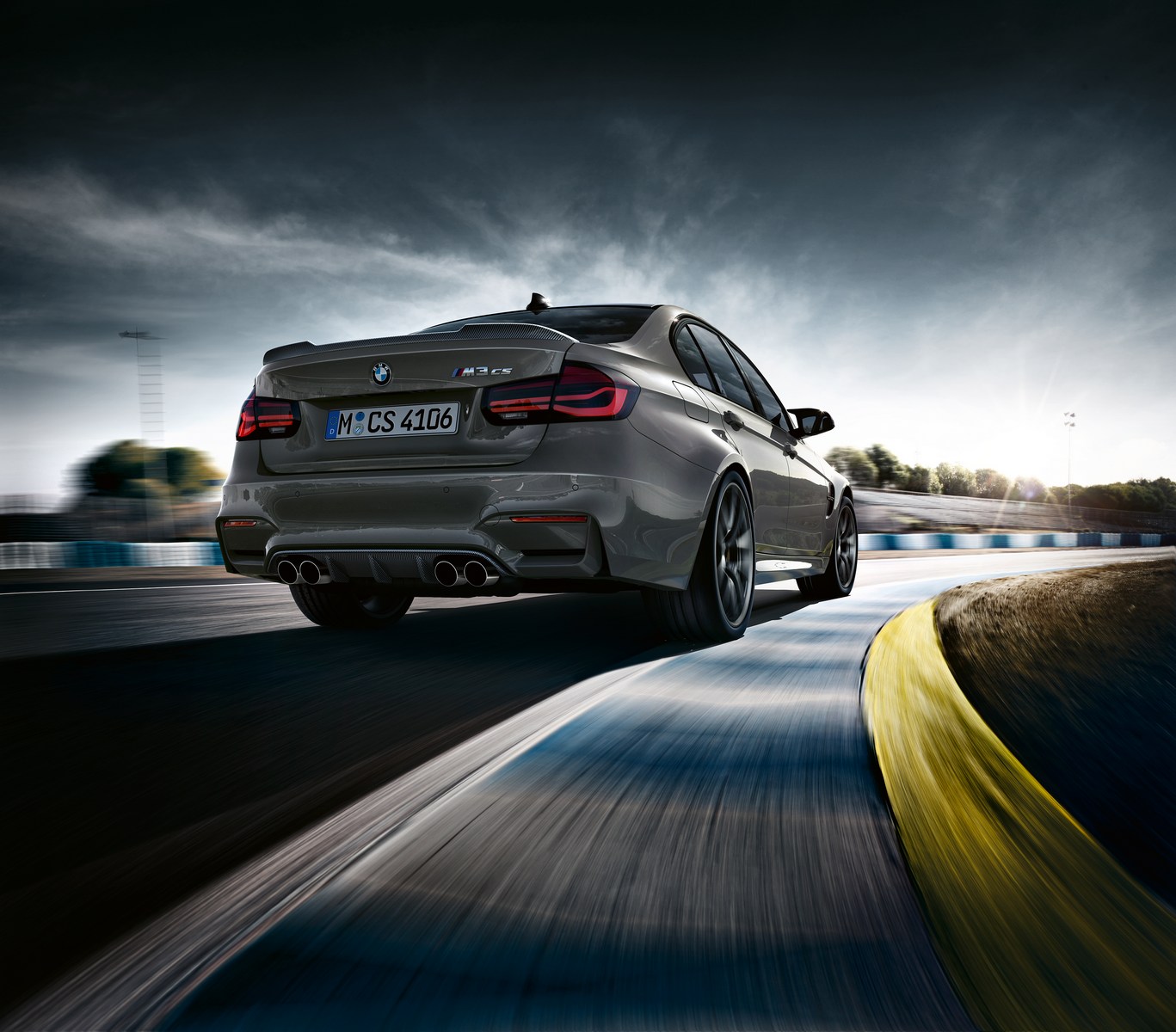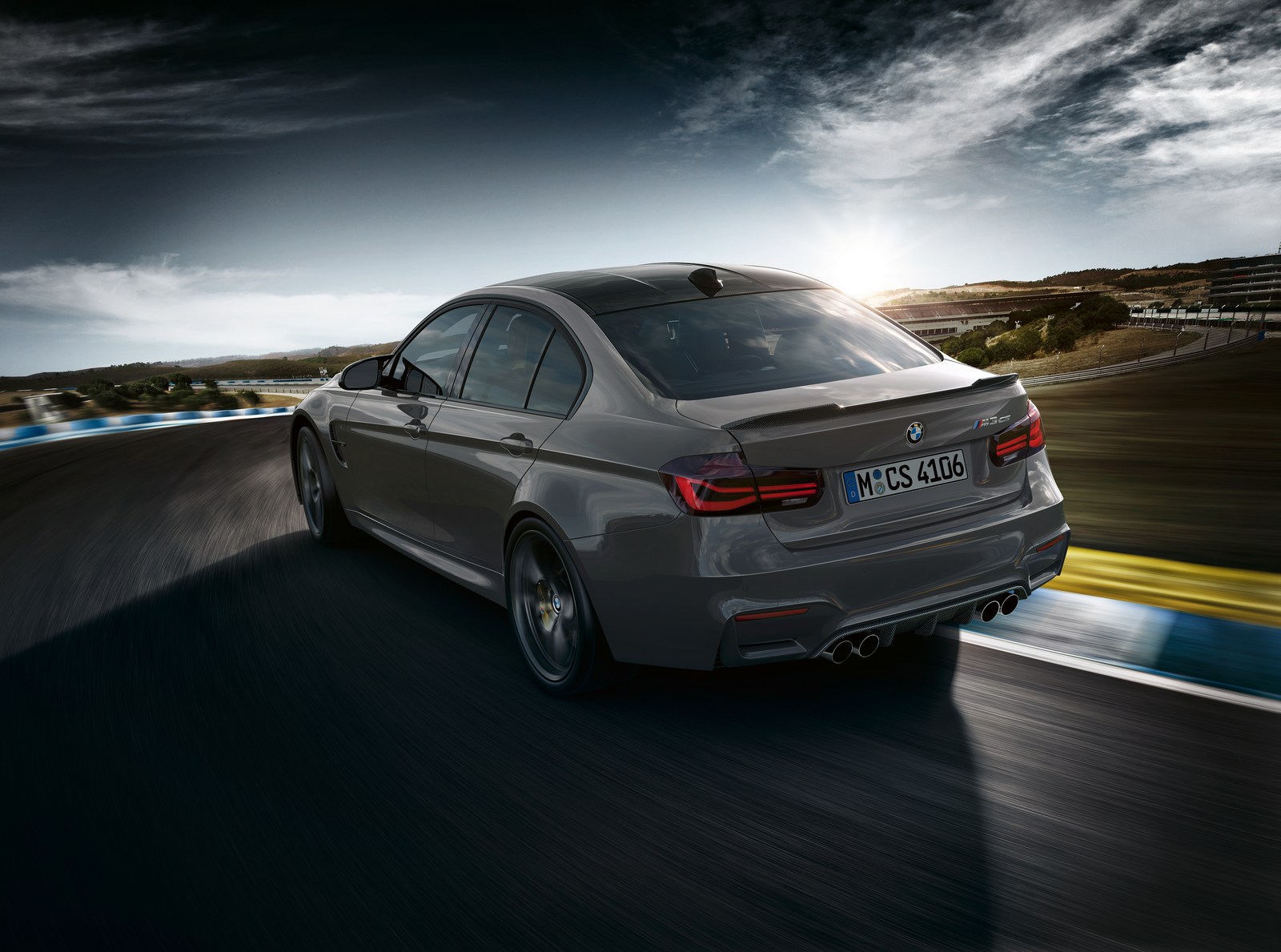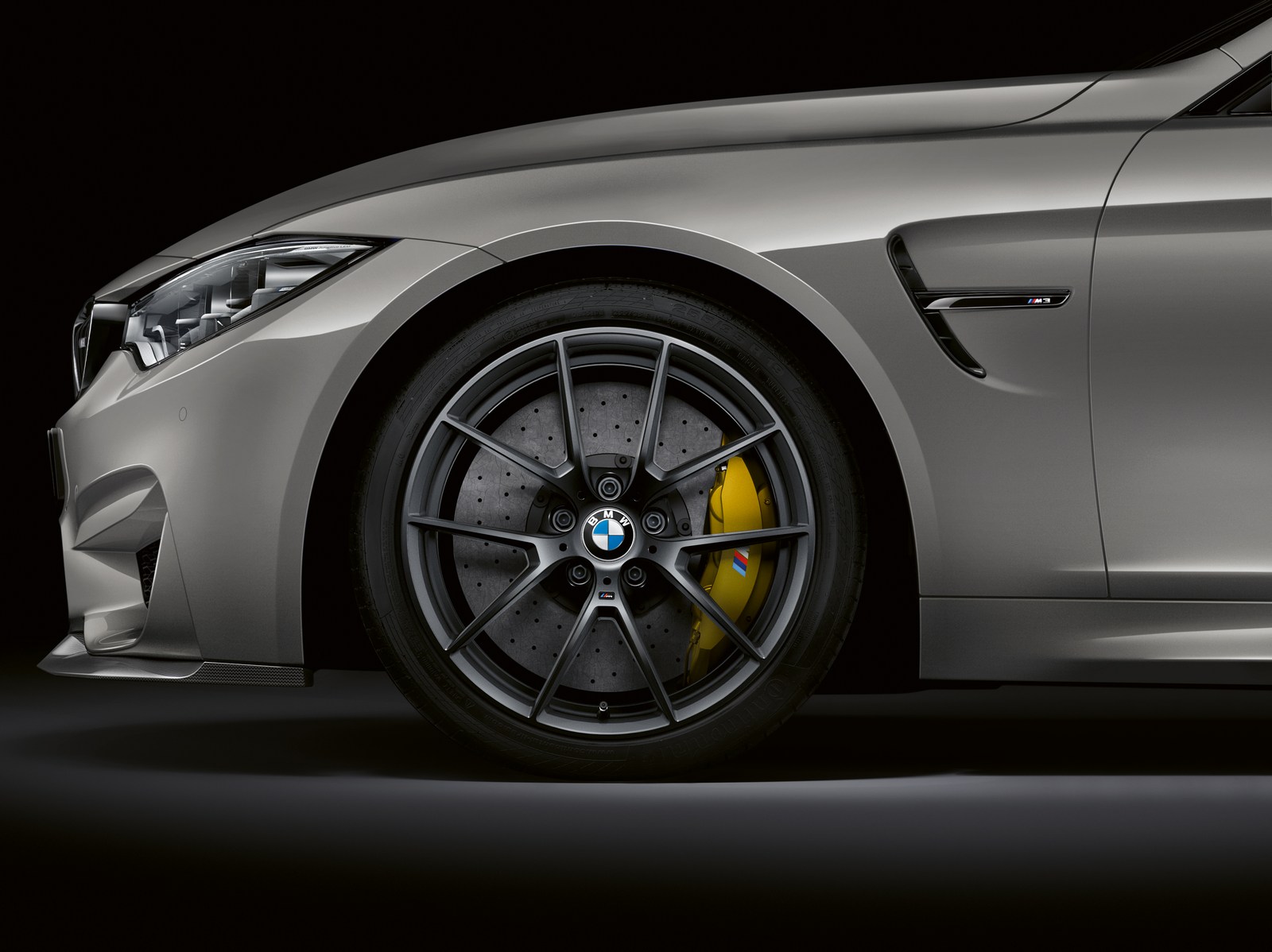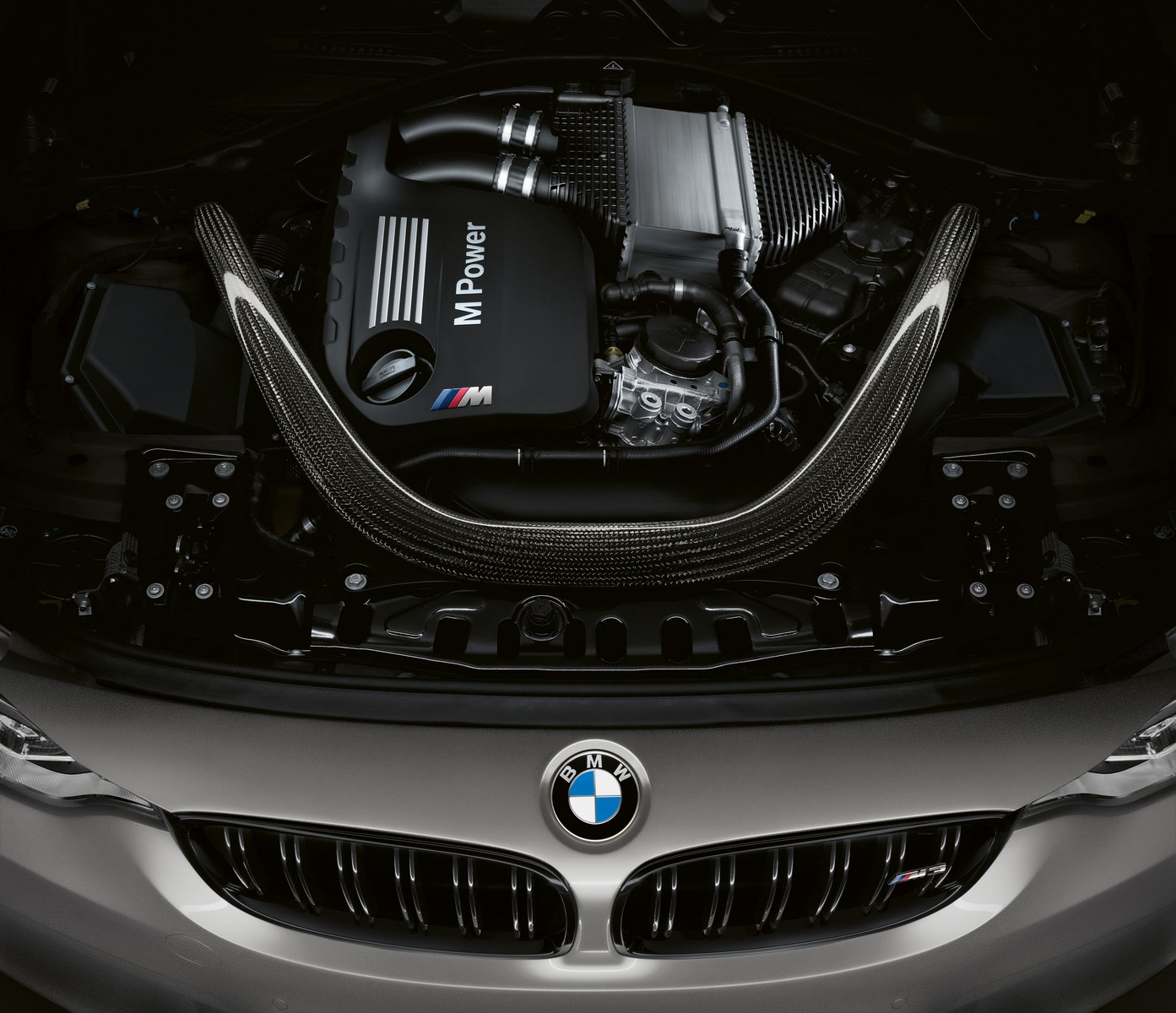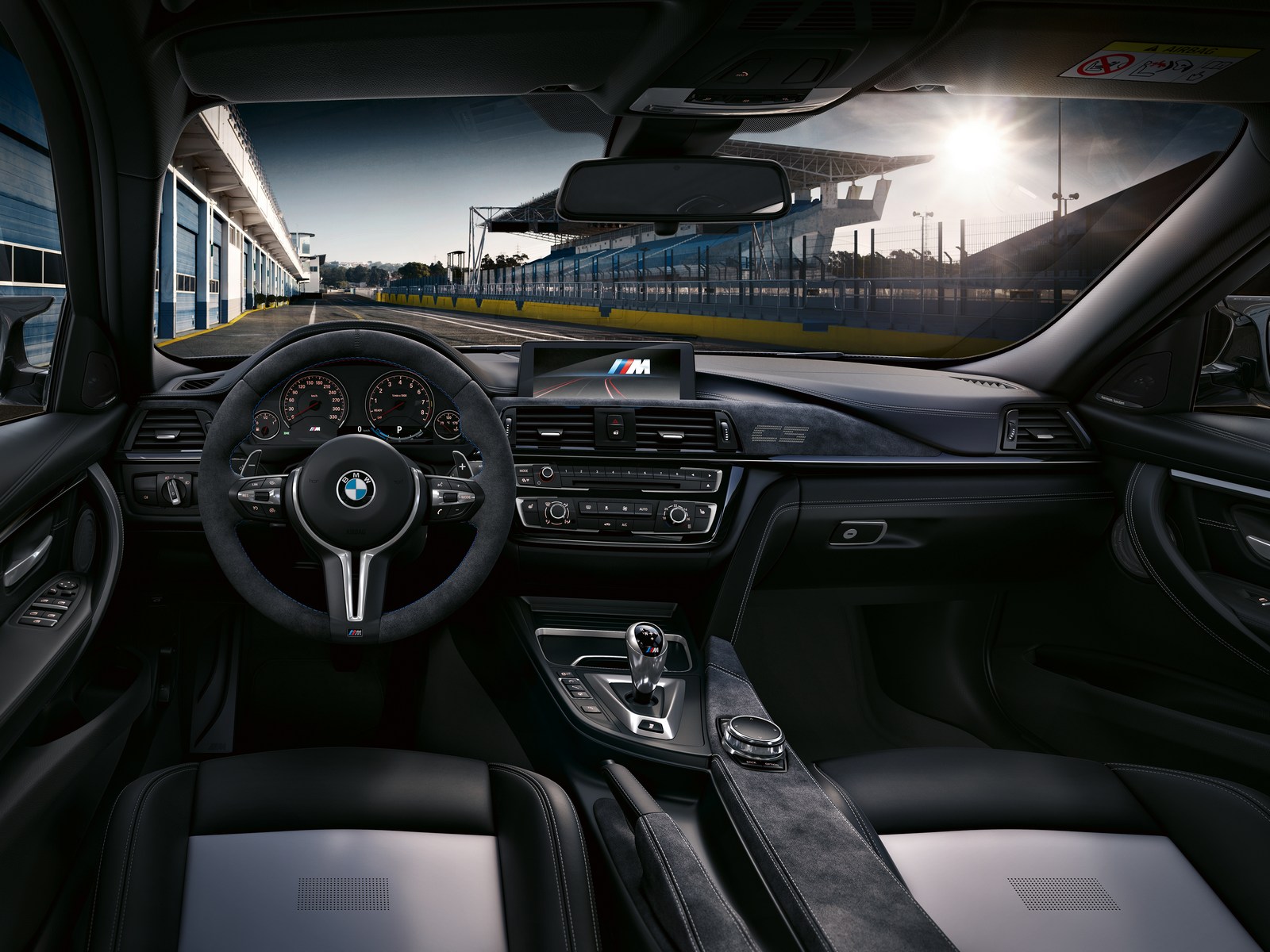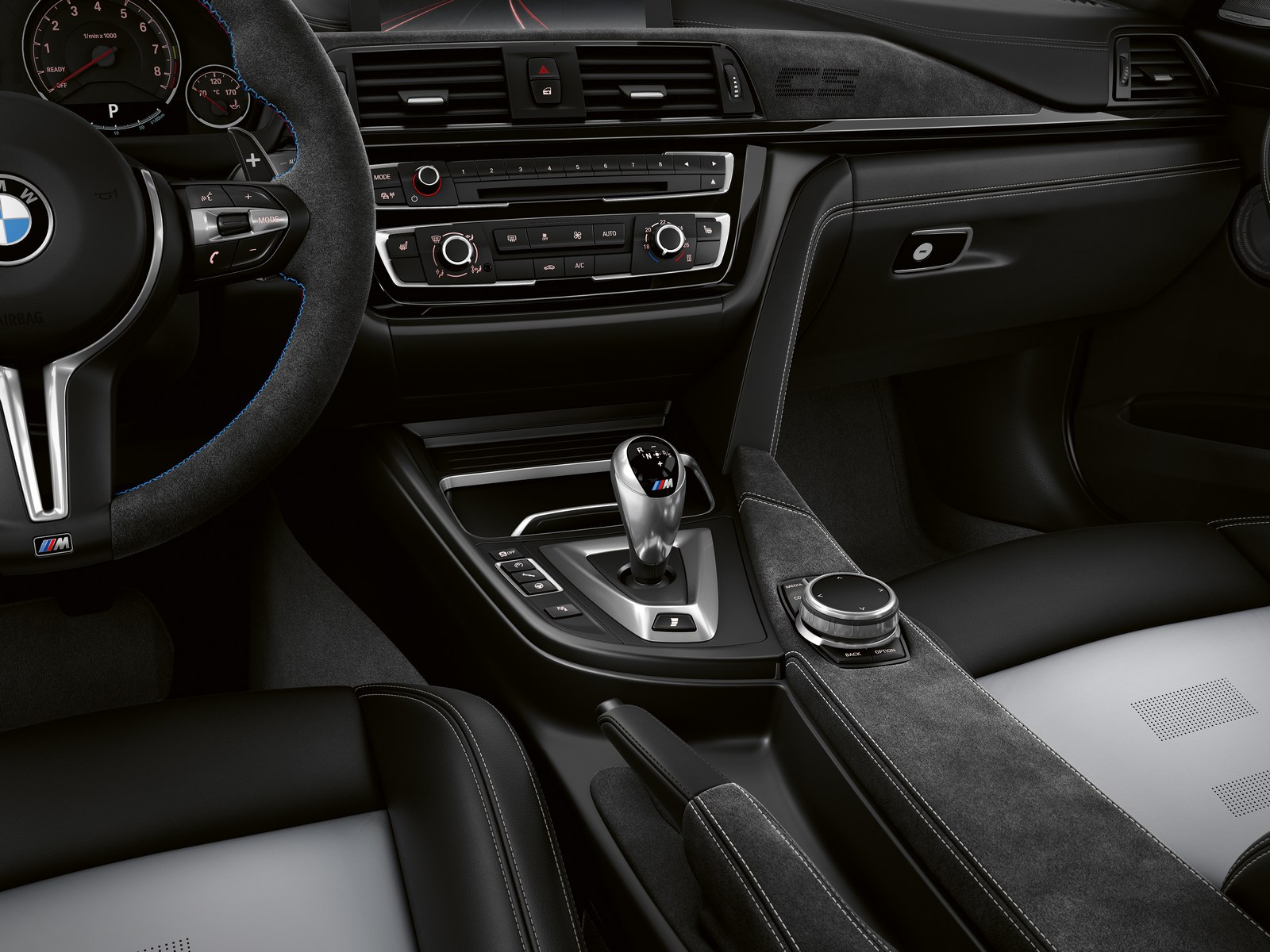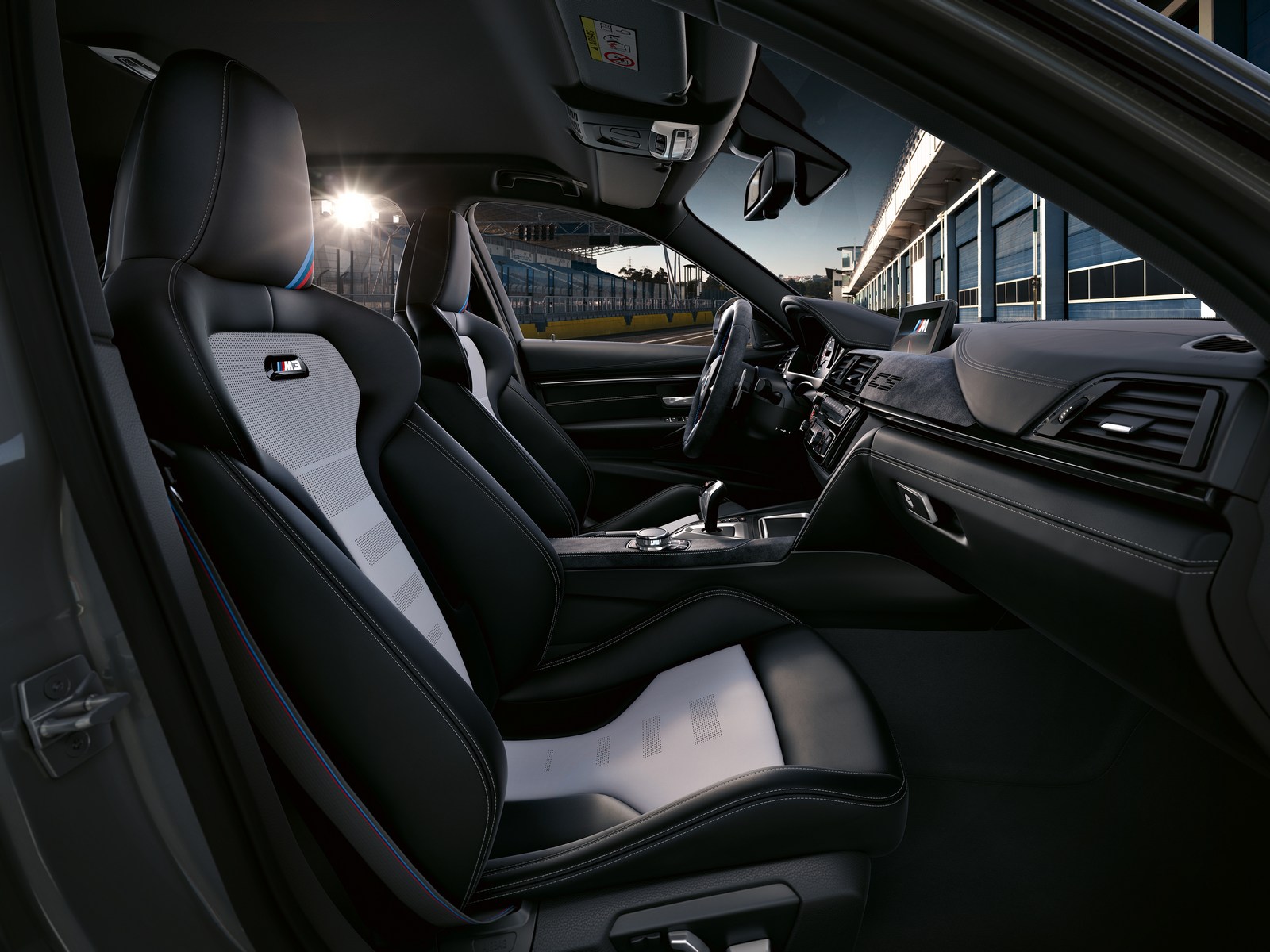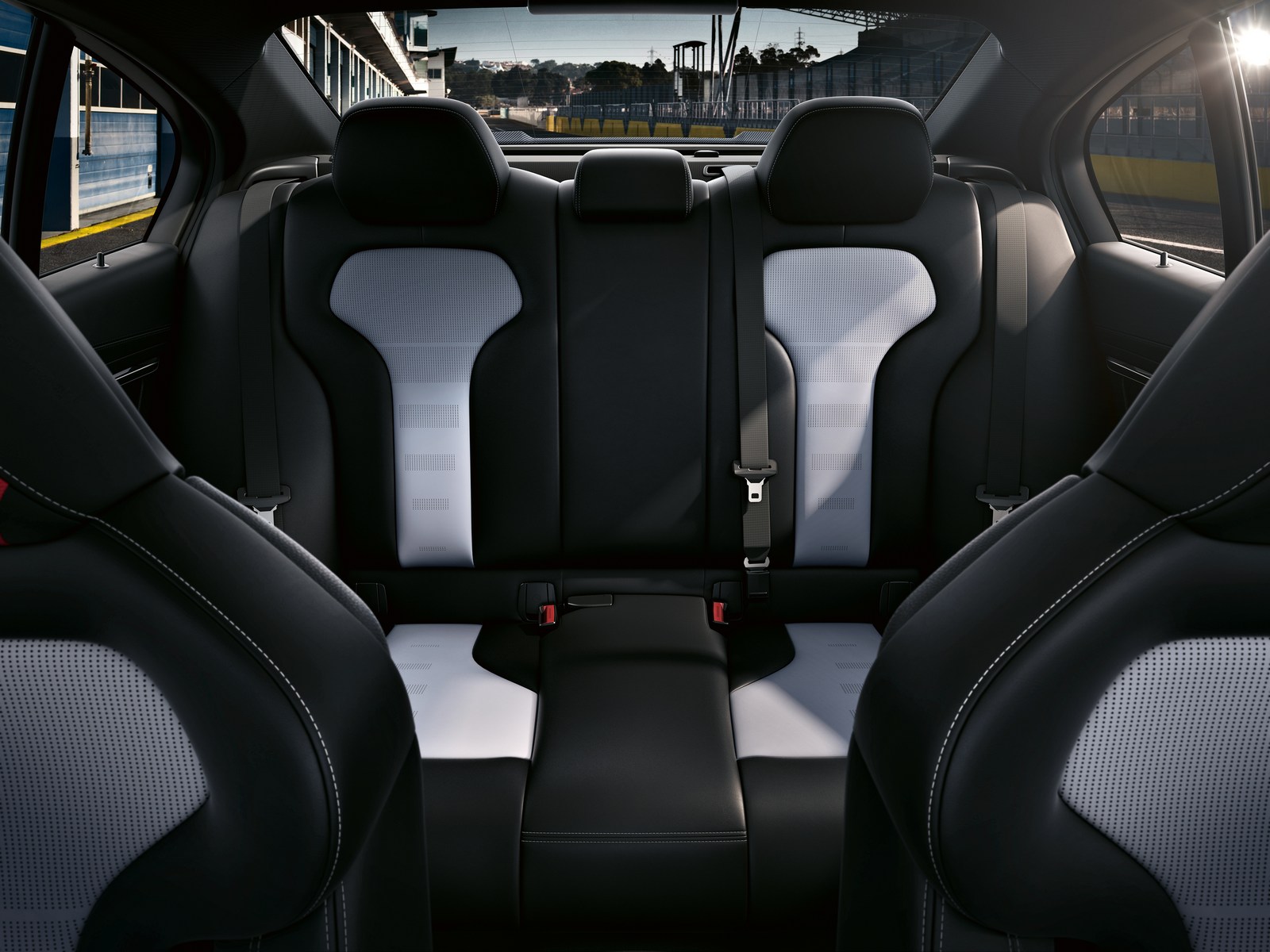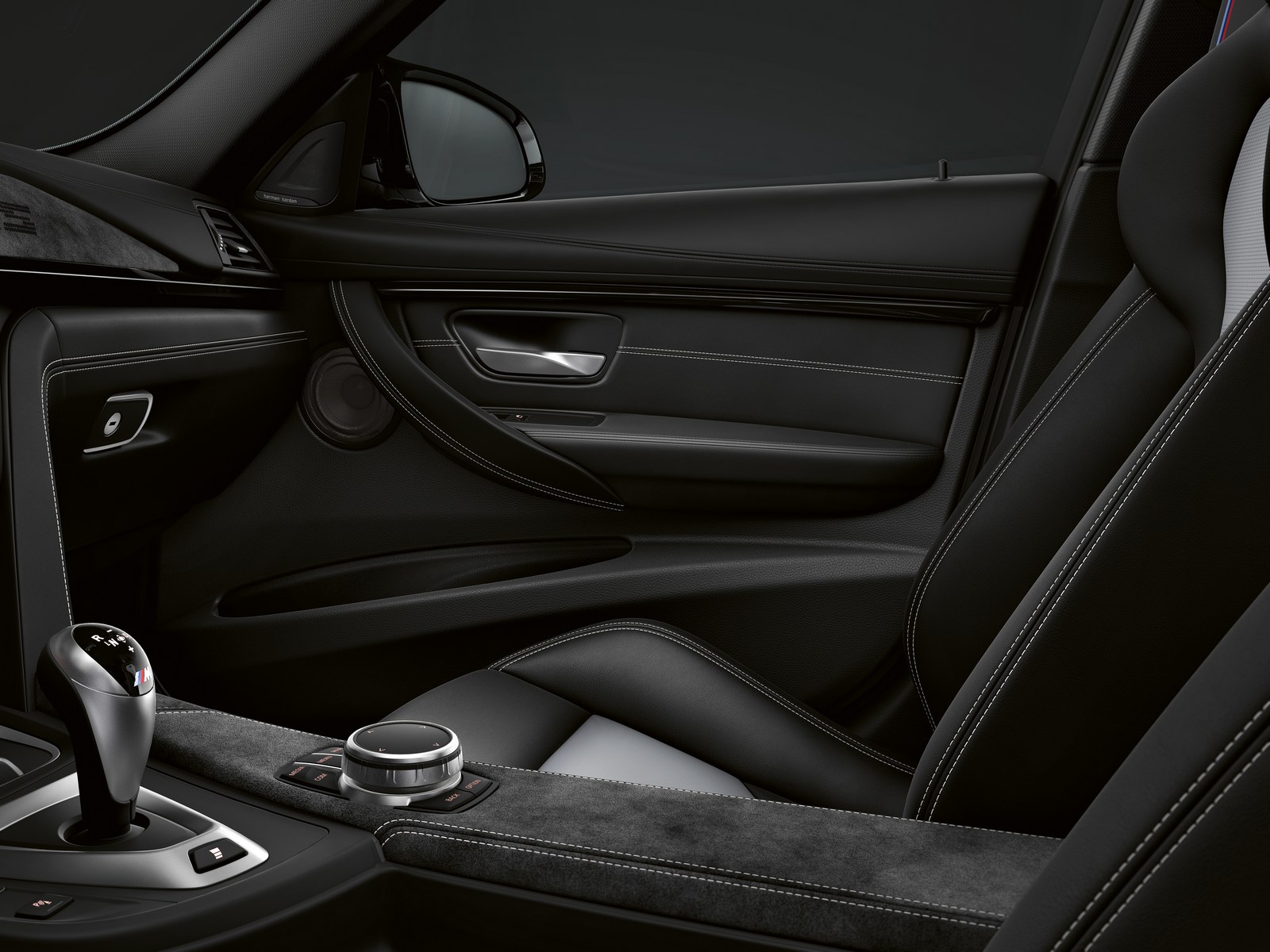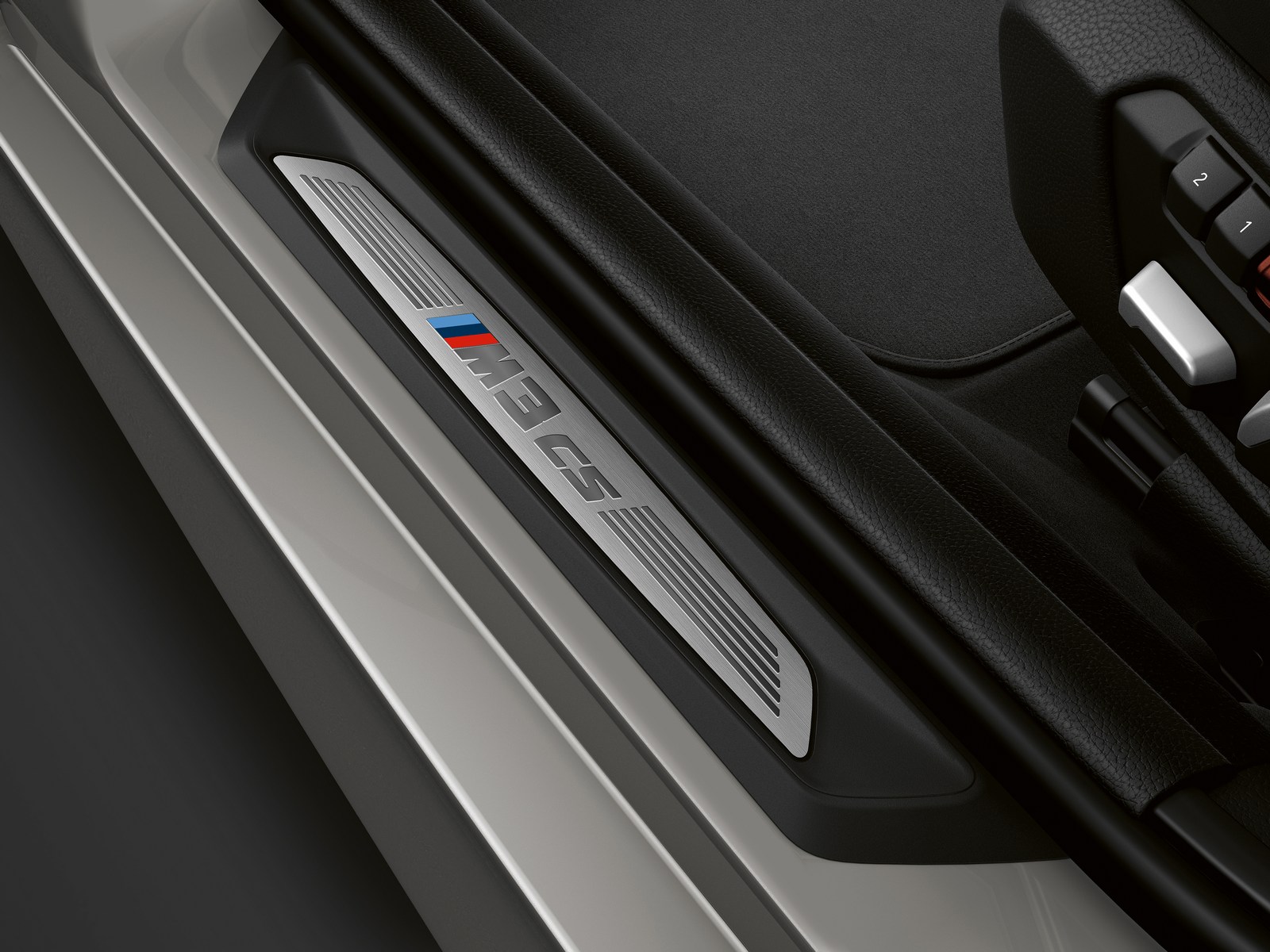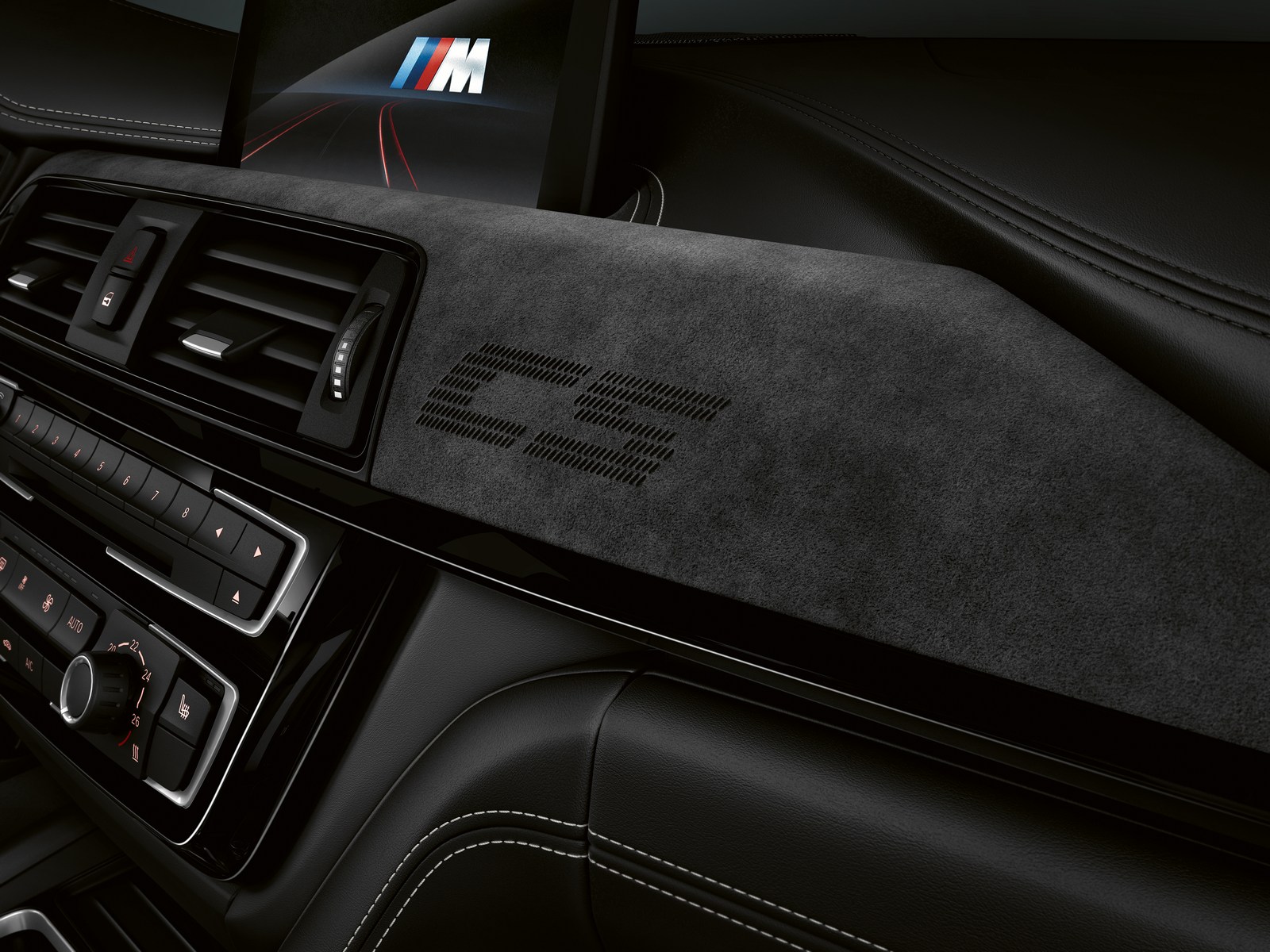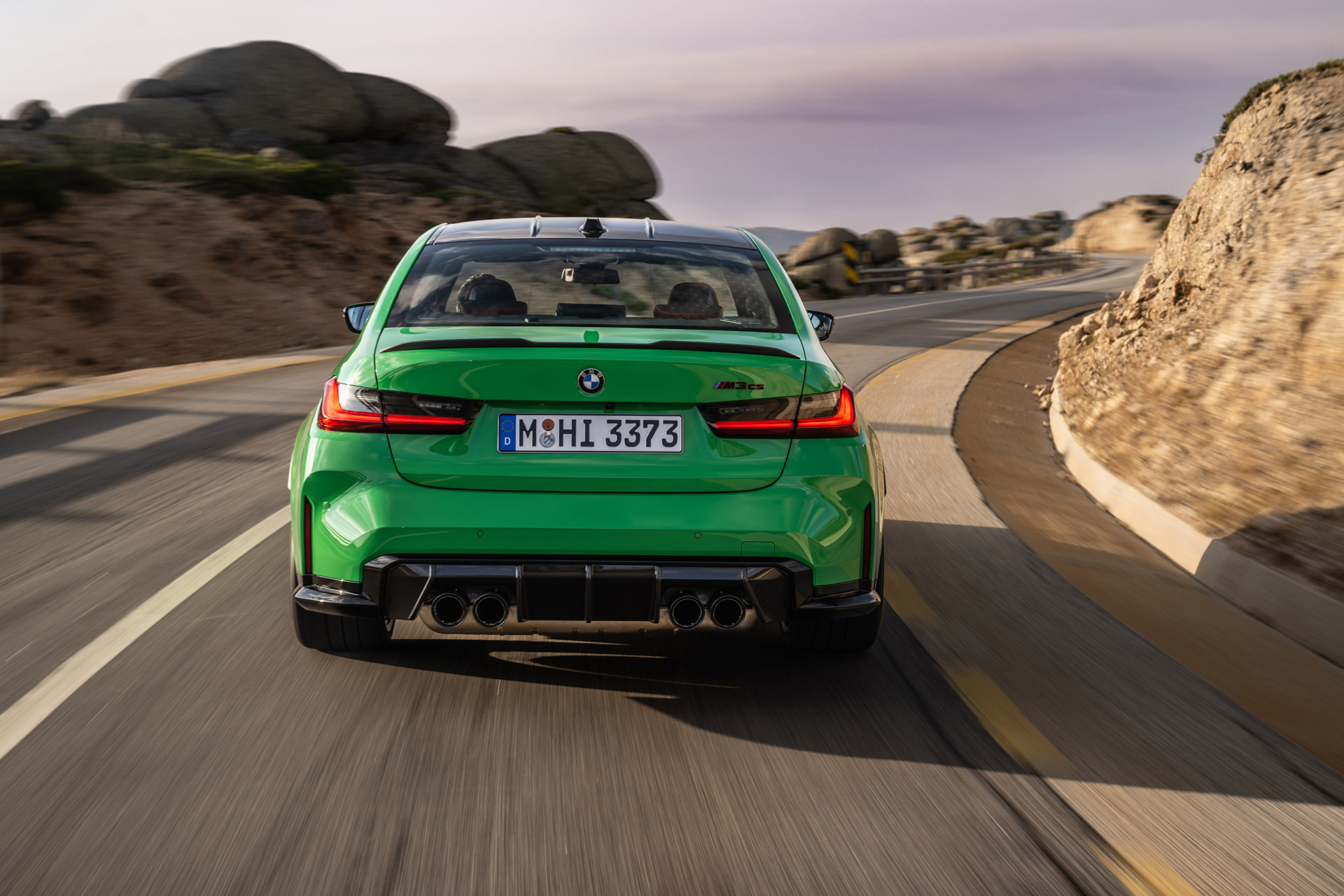The 2023 BMW M3 CS borrows heavily from last year’s M4 CSL coupe to ensure that it’s lighter, stiffer and faster than the regular 2023 M3 sedan.
But, while it does get the CSL’s 553 hp (550 PS) engine, its carbon hood and sticky Michelin Pilot Sport Cup 2 tires, is it really the most extreme road car to wear the M3 badge since BMW first applied it to a trunk lid almost 38 years ago? We dug through the M3’s back-catalog to look at the previous hardcore M3s and see which one offered the biggest upgrade over the standard car.
1988 E30 M3 Evolution II – 501 produced
Related: 543-HP 2024 BMW M3 CS Is An Even Faster M4 CSL For The Family Guy
BMW created the original E30 M3 in 1985 to go racing, but to stay competitive though the late 1980s and beyond it needed to homologate upgrades that gave us the Evolution cars. The Evo I was only very slightly different, but the Evolution II’s changes included a wheel upgrade from 15- to 16-in, thinner glass, a lighter trunk lid, deeper front spoiler and an extra rear spoiler. The 2.3-liter, naturally-aspirated inline four also got a small 20 hp (20 PS) boost to 217 hp (220 PS).
Credit: Silverstone Auctions
1990 E30 M3 Sport Evolution – 600 produced
The Sport Evo might not be as rare as the earlier EVO II, but it’s by far the more desirable. It gained adjustable front and rear spoilers, even wider fenders, chunky Recaro seats and a more modern Alcantara-wrapped M-Technic II steering wheel. But the real jewel was the S14 inline four, which was opened up from 2.3- to 2.5 liters and even with a standard catalyst (not then required by law in all of Europe) it made 235 hp (238 PS).
1995 E36 M3 GT – 350 produced
The M3’s switch to six-cylinder power for the E36 had already yielded a big jump in output to 282 hp (286 PS), but BMW bumped that to 291 hp (295 PS) with the help of 264-degree cams for a short run of British Racing Green GTs produced to homologate racing upgrades. Other performance-focused changes included adjustable front and rear spoiler, a strut brace and lightweight aluminium doors.
1995 E36 M3-R – 15 produced
The M3-R was even wilder than the GT, though these Australian-market cars were actually ordered as standard M3s before being dispatched to Frank Gardiner Racing in Oz for a comprehensive mechanical makeover legitimizing BMW Australia’s efforts in the Australian Super Production series. Each of the 15 cars received stiffer springs and shocks, AP Racing brakes and a 319 hp (324 PS) Schnitzer-modded S50 B30 motor mated to a heavy-duty 850Ci driveshaft and AP Racing clutch.
Credit: Dutton Garage
1995 E36 M3 Lightweight – 115 produced
America was sold a bit of a dummy when the E36 M3 first appeared. Instead of the 282 hp (286 PS) S50 B30 with its six throttle bodies that the rest of the world got, the U.S. cars were stuck with a 240 hp (243 PS) S50 fed through a single throttle body.
But BMW North America did instigate the production of the rather special M3 Lightweight, which retained that anaemic six but made it feel much stouter by cleaving 225 lbs (102 kg) from the curb weight, fitting a short final drive, and applying chequered flag graphics to the Alpine White III paint (worth 20 hp alone). And for those who wanted to go further, dealers were primed to supply suspension and brake upgrades, plus a special oil pan for high-g cornering.
1994 E36 M3 GTR – 2 produced
The craziest of all road-going E36 M3’s though, is the GTR. Only two street cars were built to homologate the car for the 1994 ADAC German GT Cup Touring Car series, and with a totally stripped (but caged) interior, lightweight body panels stretched to accommodate 18-in track rubber and a 297 hp (300 PS) S50, even a trip to the store must have felt like the warm-up lap on the Nürburgring 24 Hours.
2003 E46 M3 CSL – 1,383 produced
BMW hadn’t used the Coupe Sport Lightweight name on a road car in almost 30 years when it applied it to a hardcore version of the critically acclaimed E46 M3 in 2003. The S54 3.2-liter six’s output was lifted from 338 hp (343 PS) to 355 hp (360 PS) and came only with the six-speed SMG paddle-shift transmission, and the lower, stiffer chassis featured wider front wheels, grippy Michelin Pilot Sport Cup tires, and a faster steering rack.
The CSL also gave us an M Track stability mode activated by a button on the Alcantara wheel that allowed more slip without completely removing the safety net. There were also subtle styling tweaks, including a carbon roof panel and composite front and rear bumpers and sculpted trunk lid, and the interior featured one-piece front buckets, special slimmed-down rear seats and minimalist door panels.
2005 E46 M3 CS – 3,011 produced
Credit: Matt Woods/Collecting Cars
Related: New BMW 3.0 CSL Is A Re-Bodied M4 With 553 HP And A Manual Gearbox
Don’t remember the E46 CS? That’s probably because only BMW Great Britain used that name for what BMW internally referred to by the code ‘ZCP.’ Everywhere else, including in the U.S., the same confection was known as the Competition Package, and was designed to give the regular M3 a light dusting of CSL through the use of two-piece, cross-drilled brake discs, a quicker steering rack, CSL-style wheels and the CSL’s M Track stability mode. Not changed was the stock M3’s S54 3.2, which came mated to the same choice of manual or SMG transmission and was rated at 333 hp (337 PS) in the U.S. BMW would revisit the Competition Package idea in 2010 on the E92 M3.
Credit: Matt Woods/Collecting Cars
2002 E46 M3 GTR – 3 produced
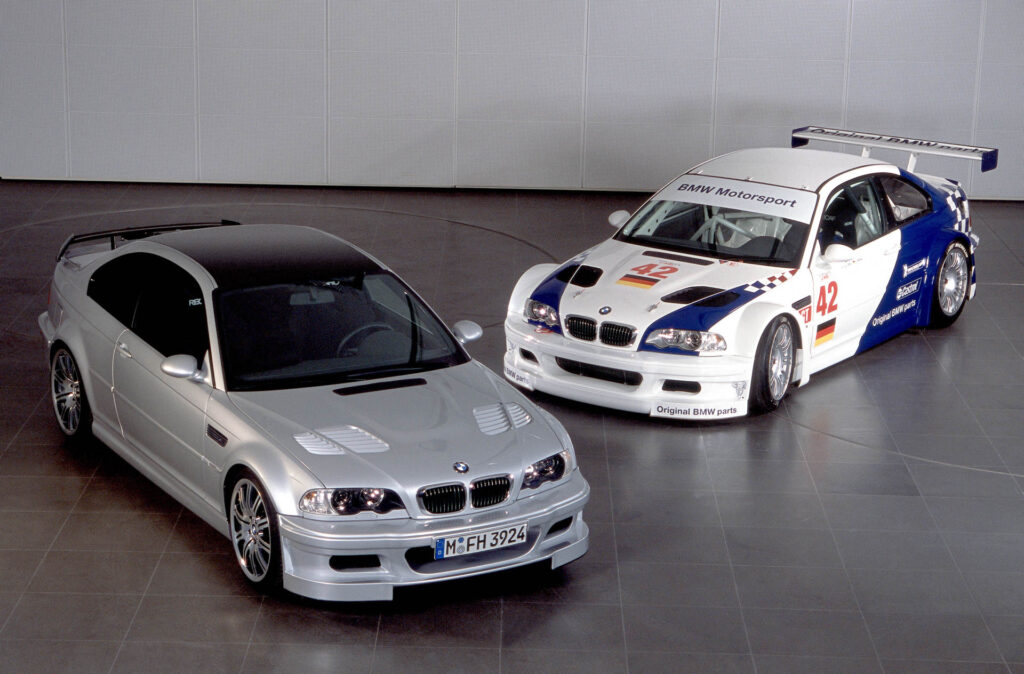
Like the original E9 CSL coupe of the 1970s, but unlike the 2003 M3 CSL or the 2022 M4 CSL, which are simply tasty marketing exercises, the E46 M3 GTR was a proper homologation special. Only three cars are believed to have been built to allow BMW to race a radically different M3 in the American Le Mans Series. How radical? Try an M3 powered not by the S54 inline six fitted to the regular M3 road cars, but a 4.0-liter V8 that produced 375 hp (380 PS).
2011 E90 M3 GTS – 138 produced
The M3 GTS wasn’t a homologation special, but it did a solid job of tricking a few people into thinking it was. It featured proper coil-over suspension, upgraded brakes, thinner glass, polycarbonate rear- and rear side windows, two buckets in the front and no back seats to help chop 154 lbs (70 kg) of flab. But the best bit was under the hood.
The E90 M3 road car had taken its lead from the old M3 GTR and stepped up to a 4.0-liter V8 for its 2008 debut, but the GTS got a 4.4-liter version of the same S65. Power swelled from 416 hp (420 PS) to 444 hp (450 PS) and was channeled to the road through BMW’s seven-speed M-DCT dual-clutch transmission.
2012 E92 M3 CRT – 67 produced
The 2012 M3 CRT is to the 2011 M3 GTS what today’s M3 CS is to last year’s M4 CSL. Not that BMW made it hugely obvious to anyone passing by a CRT on the street. This thing was seriously stealthy. While the GTS came only in bright orange, the CRTs were all painted Frozen Polar Silver with just a smattering of red details to draw your attention.
That name stood for Carbon Racing Technology, by the way, and highlighted BMW’s use of composite materials. The CRT’s hood, front seats and spoilers were all fashioned from carbon left over from the production of the i3 and i8 passenger cells. The 4.4-liter S65 V8 was carried over from the GTS coupe, but the sensible glass and fairly luxurious specification made clear this was made to be a more useable machine, much like the new all-wheel drive M3 CS.
2016 F80 M3 Competition Package – 14,969 produced
BMW had offered its first four-door M3 back in 1995, but 20 years later the M3 became a sedan-only model as BMW created a new M4 badge for coupes and convertibles using the same turbo’d six-cylinder drivetrain. They all made 425 hp (431 PS), but 2016’s optional Competition Package for both the M3 and M4 (pictured here) bumped that to 444 hp (450 PS). It was so successful that 14,969 people chose to tick the box, while only 10,851 decided to take the M3 in base form.
2018 F80 M3 CS – 1,263 produced
The Competition Package was a hit, but for a small number of BMW fans who wanted even more, BMW created an even tougher global CS model in 2018. Weight was down by around 22 lbs (10 kg) thanks to a carbon hood, there was a carbon splitter and rear lip spoiler, and the suspension was retuned to suit the track-ready Michelin Pilot Sport Cup 2 tires. And let’s not forget the extra punch: there was no E90 M3 CRT-style capacity increase for the CS, but it did get a power hike from 444 hp to 454 hp (460 PS), and torque increased from 406 to 443 lb-ft (550-600 Nm).
2023 G80 M3 CS
Related: BMW M EV Prototype Blends i4 And M4 Looks With A Quad Motor Setup
The CS returns for 2023, but with one very specific skill it didn’t have in 2018, and we’re not talking about that fancy new curved iDrive dashboard screen. For the first time the CS comes only with an all-wheel drive transmission, though this being BMW M’s clever xDrive system, you can switch it to rear-wheel drive mode when you want to play hooligan. The M4 CSL coupe, by way of contrast, is rear-wheel drive, and so substantially lighter (by 275 lbs / 125 kg), but both cars get the same 543 hp (550 PS) inline six and the CS’s all-wheel drive bite hauls it to 62 mph in 3.2 seconds, or 0.6 seconds faster than the CSL coupe.
Looking at this family tree we can see that the latest CS is the most powerful M3 yet, and the first to deliver all-wheel drive traction which might make it the best all-rounder of the lot. But it’s definitely not the craziest or the most driver-focused. Which would you park at the front of your garage and which would you bury at the back?




